Winter 2013
Editor's Note
“I think that the most important thing is to cherish your place,” said Shigeatsu Hatakeyama, a Japanese oyster farmer helping to rebuild his community after the 2011 tsunami. Hatakeyama’s story of resiliency is just one of those recounted by alumnus Drew Tanabe in his article “The Sea and the Forest Are Lovers.”
Resiliency has been a sort of theme at Marlboro this year, which started with an orientation reading of Aldo Leopold’s A Sand County Almanac and discussion of “community, land and resilience.” It continues with this issue of Potash Hill, from an article by Gary Johnson about computer models of ecosystem services to the personal resilience evoked in an excerpt from Deni Béchard’s recent memoir, Cures for Hunger. Even history professor Adam Franklin-Lyons’ work on medieval mail couriers indicates a surprising degree of physical resilience long before running shoes were invented.
As always, we are interested in hearing your news and spirited reactions to this issue of Potash Hill. You can see letters in response to the last issue on page 45. —Philip Johansson, editor
Front cover: “After the Flood,” a work in recycled sewing patterns, oil, glue and balsa wood by art professor Cathy Osman. Photo by Timothy Segar
Discovering Fire

By Deni Béchard ’97
Photos by Thea Cabreros '13
In Cures for Hunger, Deni Béchard relates the story of growing up in British Columbia with a reckless father who has a mysterious past. In this excerpt Deni’s mother has left his father and moved to Virginia, but he can’t escape the feeling that his father holds the key to understanding himself.
Another card had arrived. It bore glittery words, “Thinking About You.” Inside was his number, nothing else. As if in a movie about prison, I felt like an inmate who receives a gift in which the means of escape are hidden. I left the house and went down the highway to the 7-Eleven.
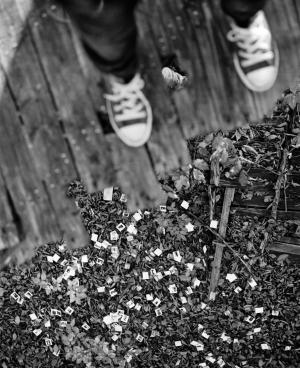 A storm was blowing in, the sky dark and the power lines swaying. Trucks slowed and chugged into turns where the highways intersected, and after I dialed collect, his voice came thinly onto the line.
A storm was blowing in, the sky dark and the power lines swaying. Trucks slowed and chugged into turns where the highways intersected, and after I dialed collect, his voice came thinly onto the line.
We hadn’t spoken in months. He sounded different, reserved and unsure of himself, nothing like what I’d imagined since my mother had confessed his crimes to us.
He asked how I was, and I told him, “I’m okay. I’m just sick of school.”
“Oh,” he said. He asked how my brother and sister were, and I said, “Okay.” I talked a bit about rebuilding an old motorcycle I’d found in the barn where my mother kept her horses and a leather jacket I wanted. But then I ran out of things to say and we were silent for so long that I knew I had to tell him, that I had to share the only thing I could think about.
“Bonnie told me.”
“She told you what?”
“About”—I said—“about your crimes.”
He didn’t speak.
Clouds were moving in, drawing evening with them.
“What did she tell you?”
“She didn’t say much. I was the one who asked. I guess I already knew.”
“You already knew what?”
“That you’d been to jail. I was proud of you. She said you robbed banks.”
Again the long silence. Wind blew through the dust of the parking lot, knocking a crushed Styrofoam cup against the brick wall.
“She said that?” he asked, softly.
“I want to know about what you did.”
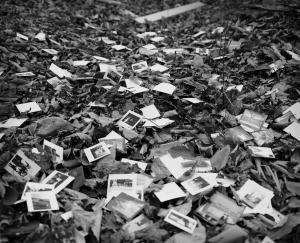 “What I did?”
“What I did?”
“I want to know everything. It’s amazing. No one else has a father like you.”
He was breathing into the receiver.
“What do you want to know?”
“About the banks. Did you only rob banks?”
“No.”
“What else did you rob?”
“I . . . .” He sighed. “Lots of things.”
“Like what?”
“You want to know about this? You’re proud?”
“It’s amazing. I think it’s amazing.”
I’d been almost panting, my heartbeat too fast. I sensed how much of a stranger he was. Four years had gone by, and I’d imagined him as he was before, living in the same house, driving the same car. But from the way he spoke, the care with which he chose his words, I knew he’d changed.
“I robbed banks,” he said. “It’s true. I robbed a lot of banks. And jewelry stores.”
“How many?”
“Maybe . . . I don’t know . . . maybe fifty banks. Armed robbery wasn’t a big deal. It was easy. I only did one bank burglary. That’s different.”
“What do you mean?”
“Burglary is when you go in at night and take everything. You go into the vault. Robbery is with a gun. Anyone can do that. But burglary takes brains.”
The image of him with a gun, robbing a bank as if it were nothing, impressed me, but burglary didn’t interest me at all.
“What about the jewelry stores?”
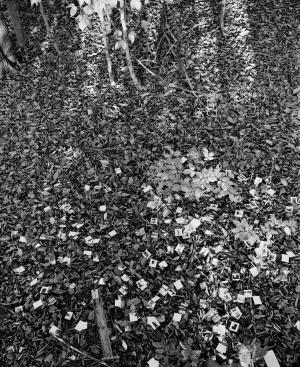 “Lots of them,” he said as if to please me. “I unloaded what I got with the mob.”
“Lots of them,” he said as if to please me. “I unloaded what I got with the mob.”
“The mob?”
“It’s not that big of a deal. It’s pretty common. I probably robbed—I don’t know— fifty jewelry stores, too. It was like a job.”
His voice became hoarse, and he coughed. I asked how bank robbery worked, and he told me about surveillance, knowing what time the armored truck came on payday. That’s when the tellers had more money. He hesitated, clearing his throat, and said, “Anyway.”
I could hardly breathe, hardly think of what to ask next. I had so many questions. I wanted him to speak, but he grew silent. Then the words came out of my mouth.
“Have you ever killed anyone?”
Rain had begun to fall, striking up the parking lot dust, the sky flat and low and gray, the wind strong.
“No,” he said finally, his voice so hoarse he was almost whispering. “Listen, Deni, I got out of crime because of you guys. I wanted a family. I didn’t want to go back to jail and not see my children. That’s why I stopped.”
“But it’s amazing. I think it’s amazing. No one else has a father like you.”
The downpour began in force, gusting under the overhang, soaking me where I huddled at the phone. Lightning flared beyond the highway, illuminating the cluttered rooftops of a subdivision. Thunder shook the ground, and the line went dead.
I hung up and pulled my jean jacket over my head and ran home.
Deni Béchard’s first novel, Vandal Love, won the 2007 Commonwealth Writers’ Prize. He also writes articles, stories and translations for a number of magazines and newspapers.
Fragments of Reality
 “The reality of the photograph is not proportionate to the truth in it,” said senior Thea Cabreros, who is working on her Plan of Concentration in photography and literature. “I feel that I have arrived somewhere when the contradictions of the photographic medium engage with the paradox of the project.” In her reading, Thea is comparing the often contradictory ethical views of Albert Camus and Fyodor Dostoevsky, but it is through her photography that she is more freely able to explore and confront the issues of constructed meaning. “When I take a photograph I am always (secretly) striving toward the utopian goals of perfection and unity. Of course, this refuses to be captured.”
“The reality of the photograph is not proportionate to the truth in it,” said senior Thea Cabreros, who is working on her Plan of Concentration in photography and literature. “I feel that I have arrived somewhere when the contradictions of the photographic medium engage with the paradox of the project.” In her reading, Thea is comparing the often contradictory ethical views of Albert Camus and Fyodor Dostoevsky, but it is through her photography that she is more freely able to explore and confront the issues of constructed meaning. “When I take a photograph I am always (secretly) striving toward the utopian goals of perfection and unity. Of course, this refuses to be captured.”
The Writing Life: An Interview with Deni Béchard
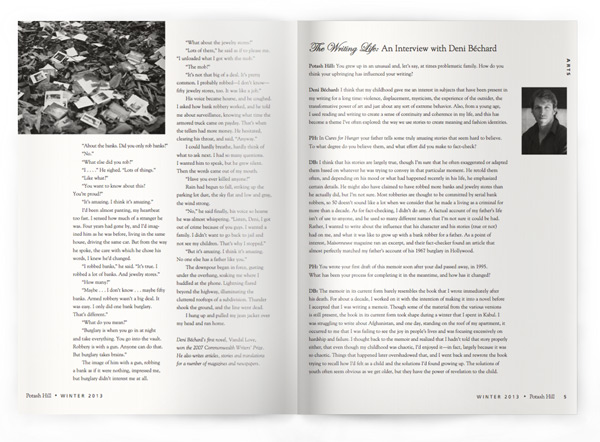
Potash Hill: You grew up in an unusual and, let’s say, at times problematic family. How do you think your upbringing has influenced your writing?
Deni Béchard: I think that my childhood gave me an interest in subjects that have been present in my writing for a long time: violence, displacement, mysticism, the experience of the outsider, the transformative power of art and just about any sort of extreme behavior. Also, from a young age, I used reading and writing to create a sense of continuity and coherence in my life, and this has become a theme I’ve often explored: the way we use stories to create meaning and fashion identities.
PH: In Cures for Hunger your father tells some truly amazing stories that seem hard to believe. To what degree do you believe them, and what effort did you make to fact-check?
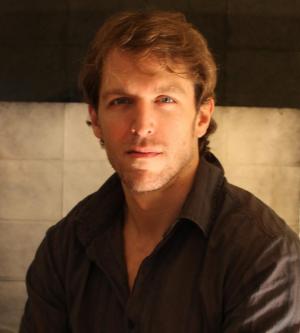 DB: I think that his stories are largely true, though I’m sure that he often exaggerated or adapted them based on whatever he was trying to convey in that particular moment. He retold them often, and depending on his mood or what had happened recently in his life, he emphasized certain details. He might also have claimed to have robbed more banks and jewelry stores than he actually did, but I’m not sure. Most robberies are thought to be committed by serial bank robbers, so 50 doesn’t sound like a lot when we consider that he made a living as a criminal for more than a decade. As for fact-checking, I didn’t do any. A factual account of my father’s life isn’t of use to anyone, and he used so many different names that I’m not sure it could be had. Rather, I wanted to write about the influence that his character and his stories (true or not) had on me, and what it was like to grow up with a bank robber for a father. As a point of interest, Maisonneuve magazine ran an excerpt, and their fact-checker found an article that almost perfectly matched my father’s account of his 1967 burglary in Hollywood.
DB: I think that his stories are largely true, though I’m sure that he often exaggerated or adapted them based on whatever he was trying to convey in that particular moment. He retold them often, and depending on his mood or what had happened recently in his life, he emphasized certain details. He might also have claimed to have robbed more banks and jewelry stores than he actually did, but I’m not sure. Most robberies are thought to be committed by serial bank robbers, so 50 doesn’t sound like a lot when we consider that he made a living as a criminal for more than a decade. As for fact-checking, I didn’t do any. A factual account of my father’s life isn’t of use to anyone, and he used so many different names that I’m not sure it could be had. Rather, I wanted to write about the influence that his character and his stories (true or not) had on me, and what it was like to grow up with a bank robber for a father. As a point of interest, Maisonneuve magazine ran an excerpt, and their fact-checker found an article that almost perfectly matched my father’s account of his 1967 burglary in Hollywood.
PH: You wrote your first draft of this memoir soon after your dad passed away, in 1995. What has been your process for completing it in the meantime, and how has it changed?
DB: The memoir in its current form barely resembles the book that I wrote immediately after his death. For about a decade, I worked on it with the intention of making it into a novel before I accepted that I was writing a memoir. Though some of the material from the various versions is still present, the book in its current form took shape during a winter that I spent in Kabul. I was struggling to write about Afghanistan, and one day, standing on the roof of my apartment, it occurred to me that I was failing to see the joy in people’s lives and was focusing excessively on hardship and failure. I thought back to the memoir and realized that I hadn’t told that story properly either, that even though my childhood was chaotic, I’d enjoyed it—in fact, largely because it was so chaotic. Things that happened later overshadowed that, and I went back and rewrote the book trying to recall how I’d felt as a child and the solutions I’d found growing up. The solutions of youth often seem obvious as we get older, but they have the power of revelation to the child.
PH: How has your perception of your father changed as a result of writing Cures for Hunger?
DB: I think that writing the memoir made me see him as a much more complete and nuanced person. It forced me to examine how he changed and the details of his character, and increasingly, I saw that I hadn’t fully understood him—that, in many ways and despite his flaws, I was the culprit in several parts of the story.
PH: The book includes some touching anecdotes from your years at Marlboro. How did your time here help shape your writing in general and/or this book in particular?
DB: Marlboro offered me a sanctuary. I’d been bouncing from home to home, trying to direct my ambitions, and being at Marlboro both grounded me and helped me develop my goals. As for writing, I had the time, encouragement and freedom to experiment with language and form, and to begin finding my voice.
PH: What are your plans for any upcoming writing projects?
DB: I am currently finishing a nonfiction book about a group of conservationists working in the Congo rainforest, and it’s due out in 2013. I also have a novel about Afghanistan that I’ve been working on for a while, and I hope to go back to that full time in a few months. In general, I would like to alternate between nonfiction and fiction. Fiction is my first love, but nonfiction puts me in situations that I wouldn’t otherwise experience and that make me see the world differently. Also, finding narrative solutions in nonfiction makes me think more creatively about fiction, and vice versa.
Ring Around the Moon
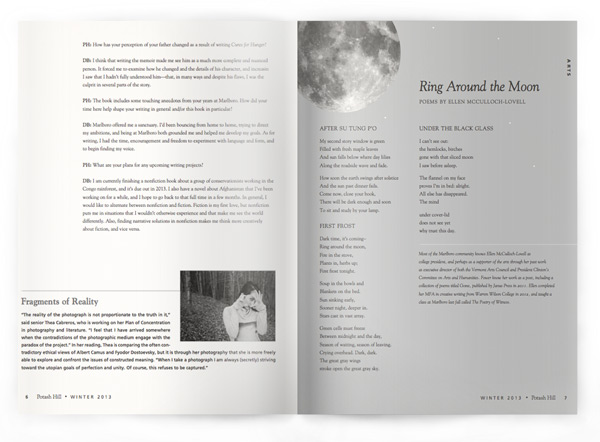
Poems by Ellen McCulloch-Lovell
After Su Tung P’o
My second story window is green
Filled with fresh maple leaves
And sun falls below where day lilies
Along the roadside wave and fade.
How soon the earth swings after solstice
And the sun past dinner fails.
Come now, close your book,
There will be dark enough and soon
To sit and study by your lamp.
First Frost
Dark time, it’s coming–
Ring around the moon,
Fire in the stove,
Plants in, herbs up;
First frost tonight.
Soup in the bowls and
Blankets on the bed.
Sun sinking early,
Sooner night, deeper in.
Stars cast in vast array.
Green cells must freeze
Between midnight and the day,
Season of waiting, season of leaving.
Crying overhead. Dark, dark.
The great gray wings
stroke open the great gray sky.
Under the Black Glass
I can’t see out:
the hemlocks, birches
gone with that sliced moon
I saw before asleep.
The flannel on my face
proves I’m in bed: alright.
All else has disappeared.
The mind
under cover-lid
does not see yet
why trust this day.
Most of the Marlboro community knows Ellen McCulloch-Lovell as college president, and perhaps as a supporter of the arts through her past work as executive director of both the Vermont Arts Council and President Clinton’s Committee on Arts and Humanities. Fewer know her work as a poet, including a collection of poems titled Gone, published by Janus Press in 2011. Ellen completed her MFA in creative writing from Warren Wilson College in 2012, and taught a class at Marlboro last fall called The Poetry of Witness.
Connecting Nature’s Dots

By Gary Johnson ’05
Modelling the flows of ecosystem services from landscapes to people could help make land use management decisions more informed…and more beneficial.
We all understand on some level that we receive benefits from nature, from the air that we breathe to the food on our table. But have you ever tried to list them all, to quantify them, or even to trace them back to the specific parcels of land where they originated? If you could somehow uncover all of these hidden connections between people and their local environments, you could fundamentally alter the ways in which we interact with and manage our landscapes, both for greater sustainability and for improved quality of life. The field of ecosystem service assessment and valuation tackles this very problem by cataloging services that different landscapes can provide and assigning values to them based on their contexts.
Some of these “ecosystem services” are fairly straightforward for us to imagine. Consider the provision of food, fuel and fiber by agricultural land or the production of lumber by forests. In both cases, a piece of land gives rise to something tangible and valuable to humans through natural processes. These products can be used directly by the landowners or sold on the market, and in either case their value is theoretically captured by this landowner.
However, when we think of landscapes in monetary terms, based solely on the marketable value of their products (e.g., wood, fruits, roots, leaves, plant fibers), we inevitably overlook the functions that they can provide as intact ecosystems. In other words, we need to ask the question, “What valuable services does a forest provide as a forest rather than as a supply of lumber?”
These are a few of the answers: filtering carbon dioxide from the air, mitigating the effects of global warming on climate change; producing oxygen that allows us to breathe; keeping soil and nutrients like phosphorous from eroding into our waterways; providing habitat for animals, plants, fungi and countless microorganisms that we might also benefit from; presenting us with numerous recreational opportunities; and improving the views (and market values) of nearby properties, both public and private.
So what, then, is the value of a forest? Perhaps we could estimate this number by adding up the worth of each of these individual contributions to our welfare. However, questions of worth are really questions about the perceptions and values of people, which are subjective and vary quite a bit across space, time, culture and educational level. Thus, it is very important when making statements about ecosystem service values that we avoid saying “this service has value X” and instead say “this service has value X to these people in this context.”
In that spirit, researchers have been conducting surveys all around the world for the past several decades, asking people how much they value the services of nature. Unfortunately, these studies are both expensive and time-consuming, limiting the number of samples that can realistically be collected. At the same time, the past decade has seen institutions around the world, from natural resource agencies to development corporations, coming to realize the decision-making power of this information.
This brings us to the realm of computer modelling, where I have made my contributions to the field. To our benefit, we now have lots of geospatial data (i.e., maps) regarding not only where the forests, fields, rivers and lakes are, but also where the towns, roads, farms and community centers are. Computer models enable us to link all of this information together and finally tease out the biophysical connections between people and the specific landscapes that provide them services.
To actually calculate the values of ecosystem services on landscapes, we use a modelling framework I created called Service Path Attribution Networks (SPAN). Using this approach, an ecosystem service is defined in terms of four components, called Source, Sink, Use and Flow, that relate to some kind of matter, energy, or information—called the “service medium”—produced by a given ecosystem. These variables chart the production of each service medium, its movement across a landscape and its beneficial or detrimental effects on the people it encounters. Specifically, for any given location, Source is a measure of the quantity of service medium produced in a given time period; Sink measures the capacity to absorb the service medium; Use is the demand for or vulnerability to the service medium; and Flow is the quantity of service medium passing through.
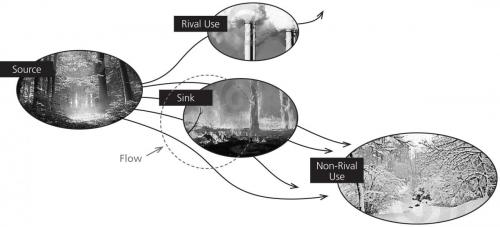 At the beginning of a SPAN model, each location on a map is assigned a Source, Sink and Use value based on data from that location. This tells us which areas are capable either of providing a service or of benefiting from one. However, this does not tell us whether any services are actually delivered. To determine this, we simulate the movement of the chosen service medium—such as water for irrigation or flooding, soil for erosion control or sediment deposition, or bees and other insects for pollination—from their Source location to Use locations (i.e., you and me). Along the way, the service medium may be captured by Sinks, possibly reducing the overall amount reaching any Use destination. Think of it as a computer game for water, bees and other environmental benefits.
At the beginning of a SPAN model, each location on a map is assigned a Source, Sink and Use value based on data from that location. This tells us which areas are capable either of providing a service or of benefiting from one. However, this does not tell us whether any services are actually delivered. To determine this, we simulate the movement of the chosen service medium—such as water for irrigation or flooding, soil for erosion control or sediment deposition, or bees and other insects for pollination—from their Source location to Use locations (i.e., you and me). Along the way, the service medium may be captured by Sinks, possibly reducing the overall amount reaching any Use destination. Think of it as a computer game for water, bees and other environmental benefits.
Once our simulation is complete, we can represent the relationships between Sources, Sinks and Users graphically as a map of flow values. Locations on the map are connected by lines indicating the amount of service that successfully travels between them, connecting landscapes with human beneficiaries like a giant web. In this map we have a strong tool for analyzing the current value of a service in terms of its impacts on specific user groups.
To illustrate these abstract ideas with a concrete example, let us imagine using the SPAN framework to model an ecosystem service we are all very familiar with: scenic views. In this case, the service medium is light traveling from scenic landscape features (Sources)—for example, mountains, rivers, lakes or wetlands—to the eyes of people (Users). As they acquire more unobstructed views of the Source locations, these people experience an increase in their property values and other more subtle benefits. However, in addition to the scenic features, these same people may also see unsightly features (Sinks) such as industrial development, billboards and highways, which reduce the value of any view that passes through them. Our Flow simulation calculates all the visible Sources and Sinks to each User given the local topography (i.e., elevation data) and estimates the value to each user based on their mix of these views.
These same methods are being used to simulate the flow of water and flood mitigation, carbon dioxide and carbon sequestration, crops and food resources and many other benefits of nature in a variety of social contexts. By applying various computer modelling techniques to the problem of ecosystem service assessment and valuation, we can start to map out the connections within any given region between the particular landscapes that provide services and the people who receive them. One of the great strengths of the SPAN framework is that it provides a common definition and representation for the myriad ecosystem services that people are currently trying to model. This allows us to generate maps combining many different services that can be directly compared and analyzed.
Now armed with knowledge of these connections, decision-makers can actually take into account the effect on specific human groups of different land management or climate change scenarios. Being able to broadly identify who is likely to win and lose makes it possible to bring the people who will have the most at stake into decision-making discussions.
Our hope is that by bringing more of the spatially relevant details about ecosystem services into land use management decisions we can begin to support more holistic development or conservation plans. These plans will account for service sources, sink regions and the flow corridors crucial to the transmission of these benefits to human users. As this work is applied by government agencies and businesses, we stand to chart a better, more informed course for our future and that of our environment.
Gary W. Johnson Jr. graduated from Marlboro with a Plan in computer science and geoinformatics, and is currently a doctoral student in computer science at the University of Vermont. Last summer Gary received an award for “Best Student Paper” at the International Congress on Environmental Modelling and Software in Leipzig, Germany, for his paper entitled “Modelling Ecosystem Service Flows under Uncertainty with Stochastic SPAN.”
New Meaning for Computer Language
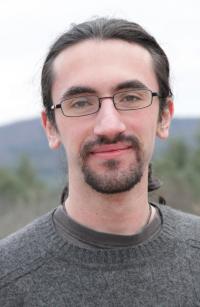 “Machine translation was a dream of computational linguists for centuries, and within the last few decades it has become a reality,” said Elias Zeidan, who did a Plan of Concentration in computer science and linguistics. He compared web-based translators using a variety of metrics and found they were not yet viable alternatives to human translation. Elias also used statistics to analyze the Voynich manuscript, a mysterious, 15th-century book written in an unknown alphabet, looking for patterns or clues to the language. “Some of the glyphs look like the Latin alphabet, others look like Arabic numerals, and still others bear no resemblance to any known writing system. Based on statistical properties of natural language, I conjecture that the writing is a language—Middle German? Czech?—enciphered into this writing system.”
“Machine translation was a dream of computational linguists for centuries, and within the last few decades it has become a reality,” said Elias Zeidan, who did a Plan of Concentration in computer science and linguistics. He compared web-based translators using a variety of metrics and found they were not yet viable alternatives to human translation. Elias also used statistics to analyze the Voynich manuscript, a mysterious, 15th-century book written in an unknown alphabet, looking for patterns or clues to the language. “Some of the glyphs look like the Latin alphabet, others look like Arabic numerals, and still others bear no resemblance to any known writing system. Based on statistical properties of natural language, I conjecture that the writing is a language—Middle German? Czech?—enciphered into this writing system.”
Express Mail: Messengers in Medieval Spain
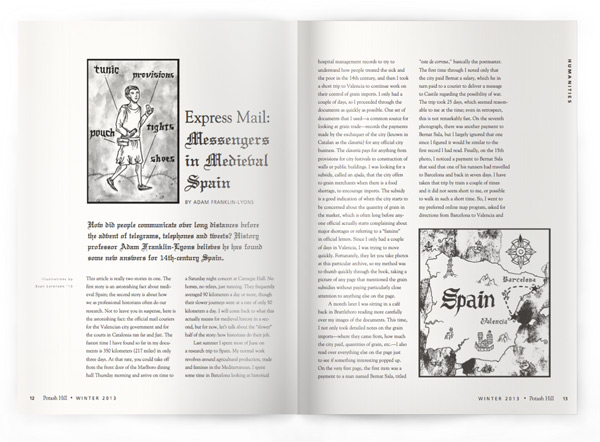
By Adam Franklin-Lyons
Illustrations by Evan Lorenzen ’13
How did people communicate over long distances before the advent of telegrams, telephones and tweets? History professor Adam Franklin-Lyons believes he has found some new answers for 14th-century Spain.
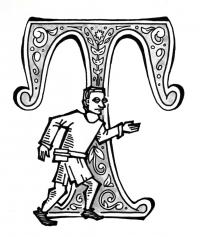 his article is really two stories in one. The first story is an astonishing fact about medieval Spain; the second story is about how we as professional historians often do our research. Not to leave you in suspense, here is the astonishing fact: the official mail couriers for the Valencian city government and for the courts in Catalonia ran far and fast. The fastest time I have found so far in my documents is 350 kilometers (217 miles) in only three days. At that rate, you could take off from the front door of the Marlboro dining hall Thursday morning and arrive on time to a Saturday night concert at Carnegie Hall. No horses, no relays, just running. They frequently averaged 90 kilometers a day or more, though their slower journeys were at a rate of only 50 kilometers a day. I will come back to what this actually means for medieval history in a second, but for now, let’s talk about the “slower” half of the story: how historians do their job.
his article is really two stories in one. The first story is an astonishing fact about medieval Spain; the second story is about how we as professional historians often do our research. Not to leave you in suspense, here is the astonishing fact: the official mail couriers for the Valencian city government and for the courts in Catalonia ran far and fast. The fastest time I have found so far in my documents is 350 kilometers (217 miles) in only three days. At that rate, you could take off from the front door of the Marlboro dining hall Thursday morning and arrive on time to a Saturday night concert at Carnegie Hall. No horses, no relays, just running. They frequently averaged 90 kilometers a day or more, though their slower journeys were at a rate of only 50 kilometers a day. I will come back to what this actually means for medieval history in a second, but for now, let’s talk about the “slower” half of the story: how historians do their job.
Last summer I spent most of June on a research trip to Spain. My normal work revolves around agricultural production, trade and famines in the Mediterranean. I spent some time in Barcelona looking at historical hospital management records to try to understand how people treated the sick and the poor in the 14th century, and then I took a short trip to Valencia to continue work on their control of grain imports. I only had a couple of days, so I proceeded through the documents as quickly as possible. One set of documents that I used—a common source for looking at grain trade—records the payments made by the exchequer of the city (known in Catalan as the clavaria) for any official city business. The clavaria pays for anything from provisions for city festivals to construction of walls or public buildings. I was looking for a subsidy, called an ajuda, that the city offers to grain merchants when there is a food shortage, to encourage imports. The subsidy is a good indication of when the city starts to be concerned about the quantity of grain in the market, which is often long before anyone official actually starts complaining about major shortages or referring to a “famine” in official letters. Since I only had a couple of days in Valencia, I was trying to move quickly. Fortunately, they let you take photos at this particular archive, so my method was to thumb quickly through the book, taking a picture of any page that mentioned the grain subsidies without paying particularly close attention to anything else on the page.
A month later I was sitting in a café back in Brattleboro reading more carefully over my images of the documents. This time, I not only took detailed notes on the grain imports—where they came from, how much the city paid, quantities of grain, etc.—I also read over everything else on the page just to see if something interesting popped up. On the very first page, the first item was a payment to a man named Bernat Sala, titled “oste de correus,” basically the postmaster. The first time through I noted only that the city paid Bernat a salary, which he in turn paid to a courier to deliver a message to Castile regarding the possibility of war. The trip took 25 days, which seemed reasonable to me at the time; even in retrospect, this is not remarkably fast. On the seventh photograph, there was another payment to Bernat Sala, but I largely ignored that one since I figured it would be similar to the first record I had read. Finally, on the 15th photo, I noticed a payment to Bernat Sala that said that one of his runners had travelled to Barcelona and back in seven days. I have taken that trip by train a couple of times and it did not seem short to me, or possible to walk in such a short time. So, I went to my preferred online map program, asked for directions from Barcelona to Valencia and got back 348 kilometers. At that point I was dumbfounded: a 700-kilometer journey in six days. This is the speed mentioned in the first paragraph, and it is clearly astonishing (if you know anyone who runs marathons, or even ultra-marathons, ask them—they will be shocked). From then on, I wrote down the details of every trip I found mentioned in payments to Bernat.
Among these trips, certain particulars started to become clear. Some trips, almost always during a crisis, were labeled “in a hurry.” These were usually important diplomatic communications, information about battles or (relevant to my research) runners sent to find out the price of grain in neighboring cities during a shortage. The initial trip I discovered to the court of Castile, probably held in the city of Burgos that year, does not say that they were sent in a hurry. The runner carried normal diplomatic letters and probably made the trip on a more or less regular basis to maintain communication between kingdoms. Faster trips represent emergencies, and the runners got paid accordingly. On the 25-day trip to Castile, the runner received four solidi per day—about double what an agricultural laborer made in a day—a good wage, but not extravagant. The runner who made the fantastic round trip to Barcelona in under a week? He received a salary of 22 solidi per day, plus 66 extra solidi as a reward for such a swift trip.
I have found no indication anywhere that they ever used horses. While I cannot be absolutely certain why, I know that horses are more expensive to keep and maintain. Additionally, horses provide the greatest speed advantage when used in stages (as later mail services would do—think pony express). Stages necessitate way stations and even greater infrastructure investment; they are also quite vulnerable in unstable political situations. I currently think that individual runners were more reliable and also less conspicuous, without sacrificing a great deal of speed.
 The runners carried only the smallest amount of weight. They ran in a tunic and tights with fairly ordinary shoes and carried a small pouch that held their letters as well as some sort of provisions. The clothing might not seem like ideal running gear, but compared to the heavy wool robes or cloaks worn by most people, even in hot weather, this outfit does begin to feel light and efficient. I know from another note in the clavaria that Bernat Sala purchased a large amount of candied fruit, “for the runners,” so I assume that provided the short-term energy needed to keep moving. The letters themselves, the primary reason for the journey and the speed, communicated all manner of information between officials, nobility and city leaders: news of war, official treaties, requests for purchase of grain, sometimes promissory notes to pay for major purchases or even bribes to influence events at court.
The runners carried only the smallest amount of weight. They ran in a tunic and tights with fairly ordinary shoes and carried a small pouch that held their letters as well as some sort of provisions. The clothing might not seem like ideal running gear, but compared to the heavy wool robes or cloaks worn by most people, even in hot weather, this outfit does begin to feel light and efficient. I know from another note in the clavaria that Bernat Sala purchased a large amount of candied fruit, “for the runners,” so I assume that provided the short-term energy needed to keep moving. The letters themselves, the primary reason for the journey and the speed, communicated all manner of information between officials, nobility and city leaders: news of war, official treaties, requests for purchase of grain, sometimes promissory notes to pay for major purchases or even bribes to influence events at court.
This small glimpse of so many letters moving back and forth illustrates an impressive amount of written communication; and their sometimes incredible speed challenges several assumptions I previously held about medieval Europe. It means that many more people would have had extensive access to recent information. People did not make decisions in a vacuum, unaware of what was going on even in the next village. I am fairly certain that during times of crisis the runners would not have been willing to share the contents of their communications with any old villager on their route (and come to think of it, I am not even certain they would have been able to read or even known the content of their messages). However, we do know that even illiterate citizens of towns knew a great deal about their town’s decision-making, laws and recent events. If official news from fairly great distances got included in this mix of knowledge that people had, it probably meant that the citizens knew about happenings in other regional centers as well. Through day-to-day market travel and more mundane communication, this means that people within as much as 40 miles of Valencia could also have known, to a greater or lesser degree, what was happening in the larger city, and by extension news from across much of Spain, on a fairly regular basis. Drawing circles of the spread of this knowledge around every sizable city in the region (Barcelona, Tarragona, Lleida, Tortosa) starts to cover a significant percentage of available space. It starts to feel like news could travel very far, very fast, and penetrate quite deeply within medieval society. All but the most remote villages could have had some sort of access to the goings on of the greater world on a semi-routine basis. This integration far exceeds what most medievalists I know would have considered normal.
To end back on my second story about historical research, I don’t know how true all this is. I only have around 15 trips by runners over the course of a six-month period. I will need to cover all of the payment books (around a dozen volumes, if I remember correctly), compiling a large list of trips and trying to answer a variety of questions: Did they go slower based on the season? Do they ever work with other runners hired by other cities? Who else did they communicate with besides their official handlers? How small of a city might have had professional runners? For now, I know none of those things. Future work will involve returning to my newly discovered source, but also hunting for new sources now that I have new questions. Truth be told, that hunt is why many of us go into history in the first place. Sure, writing up findings and the sense of accomplishment in finishing a project is great. But having unanswered questions—perhaps questions never before asked —that is what historical research is all about. That is exciting.
Adam Franklin-Lyons teaches history at Marlboro, with a particular interest in the economic, social and environmental history of the Middle Ages. This article is loosely based on a paper Adam plans to present at the Plymouth Medieval and Renaissance Forum in April.
Running from Bone Injury
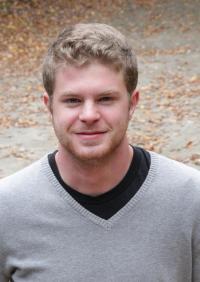 Will Mikell ’13 first became intrigued with the bone physiology of running after reading Born to Run, the story of Mexico’s Tarahumara people who are known to run hundreds of miles without rest or injury. A premed student with a Plan of Concentration in biology and literature, Will explored recent research on the mineral bone density and skeletal health of marathon runners. His independent project compares barefoot runners to “shod” runners. “Running shoes have these big chunky soles, and they’re really quite detrimental to your skeleton,” said Will. “We didn’t evolve to include ‘heel strike’ in our running gait, and it actually causes damage to the shins, knees, hips, back, everywhere. A lot of the athletic injuries that you hear about now didn’t happen before thick-soled running shoes were introduced.”
Will Mikell ’13 first became intrigued with the bone physiology of running after reading Born to Run, the story of Mexico’s Tarahumara people who are known to run hundreds of miles without rest or injury. A premed student with a Plan of Concentration in biology and literature, Will explored recent research on the mineral bone density and skeletal health of marathon runners. His independent project compares barefoot runners to “shod” runners. “Running shoes have these big chunky soles, and they’re really quite detrimental to your skeleton,” said Will. “We didn’t evolve to include ‘heel strike’ in our running gait, and it actually causes damage to the shins, knees, hips, back, everywhere. A lot of the athletic injuries that you hear about now didn’t happen before thick-soled running shoes were introduced.”
The Sea and the Forest Are Lovers: Resiliency in Northeastern Japan
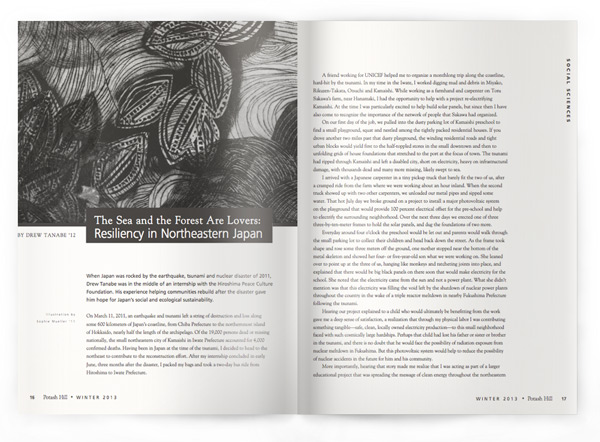
By drew Tanabe ’12
Illustration by Sophie Mueller ’11
When Japan was rocked by the earthquake, tsunami and nuclear disaster of 2011, Drew Tanabe was in the middle of an internship with the Hiroshima Peace Culture Foundation. His experience helping communities rebuild after the disaster gave him hope for Japan’s social and ecological sustainability.
On March 11, 2011, an earthquake and tsunami left a string of destruction and loss along some 600 kilometers of Japan’s coastline, from Chiba Prefecture to the northernmost island of Hokkaido, nearly half the length of the archipelago. Of the 19,000 persons dead or missing nationally, the small northeastern city of Kamaishi in Iwate Prefecture accounted for 4,000 confirmed deaths. Having been in Japan at the time of the tsunami, I decided to head to the northeast to contribute to the reconstruction effort. After my internship concluded in early June, three months after the disaster, I packed my bags and took a two-day bus ride from Hiroshima to Iwate Prefecture.
A friend working for UNICEF helped me to organize a monthlong trip along the coastline, hard-hit by the tsunami. In my time in the Iwate, I worked digging mud and debris in Miyako, Rikuzen-Takata, Otsuchi and Kamaishi. While working as a farmhand and carpenter on Toru Sakawa’s farm, near Hanamaki, I had the opportunity to help with a project re-electrifying Kamaishi. At the time I was particularly excited to help build solar panels, but since then I have also come to recognize the importance of the network of people that Sakawa had organized.
On our first day of the job, we pulled into the dusty parking lot of Kamaishi preschool to find a small playground, squat and nestled among the tightly packed residential houses. If you drove another two miles past that dusty playground, the winding residential roads and tight urban blocks would yield first to the half-toppled stores in the small downtown and then to unfolding grids of house foundations that stretched to the port at the focus of town. The tsunami had ripped through Kamaishi and left a disabled city, short on electricity, heavy on infrastructural damage, with thousands dead and many more missing, likely swept to sea.
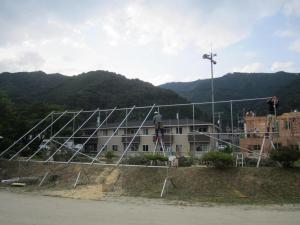 I arrived with a Japanese carpenter in a tiny pickup truck that barely fit the two of us, after a cramped ride from the farm where we were working about an hour inland. When the second truck showed up with two other carpenters, we unloaded our metal pipes and sipped some water. That hot July day we broke ground on a project to install a major photovoltaic system on the playground that would provide 100 percent electrical offset for the pre-school and help to electrify the surrounding neighborhood. Over the next three days we erected one of three three-by-ten-meter frames to hold the solar panels, and dug the foundations of two more.
I arrived with a Japanese carpenter in a tiny pickup truck that barely fit the two of us, after a cramped ride from the farm where we were working about an hour inland. When the second truck showed up with two other carpenters, we unloaded our metal pipes and sipped some water. That hot July day we broke ground on a project to install a major photovoltaic system on the playground that would provide 100 percent electrical offset for the pre-school and help to electrify the surrounding neighborhood. Over the next three days we erected one of three three-by-ten-meter frames to hold the solar panels, and dug the foundations of two more.
Everyday around four o’clock the preschool would be let out and parents would walk through the small parking lot to collect their children and head back down the street. As the frame took shape and rose some three meters off the ground, one mother stopped near the bottom of the metal skeleton and showed her four- or five-year-old son what we were working on. She leaned over to point up at the three of us, hanging like monkeys and ratcheting joints into place, and explained that there would be big black panels on there soon that would make electricity for the school. She noted that the electricity came from the sun and not a power plant. What she didn’t mention was that this electricity was filling the void left by the shutdown of nuclear power plants throughout the country in the wake of a triple reactor meltdown in nearby Fukushima Prefecture following the tsunami.
Hearing our project explained to a child who would ultimately be benefitting from the work gave me a deep sense of satisfaction, a realization that through my physical labor I was contributing something tangible—safe, clean, locally owned electricity production—to this small neighborhood faced with such cosmically large hardships. Perhaps that child had lost his father or sister or brother in the tsunami, and there is no doubt that he would face the possibility of radiation exposure from nuclear meltdown in Fukushima. But this photovoltaic system would help to reduce the possibility of nuclear accidents in the future for him and his community.
More importantly, hearing that story made me realize that I was acting as part of a larger educational project that was spreading the message of clean energy throughout the northeastern disaster zone. Sakawa, a committed permaculture farmer and advocate for green lifestyles and technologies in Japan, did much more than run the farm where I was working that July. He was connected with a group of social entrepreneurs, farmers, agricultural workers, carpenters and electronics store owners who were mobilizing funds, labor, expertise and equipment to provide renewable power to municipal buildings along the coast of Iwate. Among other projects, Sakawa and partners had recently finished a 100-kilowatt installation at an elementary school in the nearby hard-hit city of Rikuzen-Takata. By placing these installations in small community settings, Sakawa and his associates were not merely providing vitally needed electricity to hard-struck areas. They were bringing local community members into direct contact with clean technologies and the concept of small-scale distributed electricity generation.
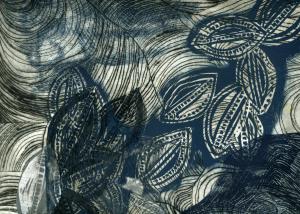 Civic ecologists, like Keith Tidball and his colleagues at Cornell University, offer us a framework to understand the role of projects such as Sakawa’s solar electrification project in Kamaishi following disaster. They propose that all communities are part of a larger social-ecological system (SES): social systems (families, communities, populations, states, etc.) are nested within ecological systems (ecosystems, watersheds, landscapes, bioregions, biosphere). SES resilience theory builds on this foundation and asks what are the mechanisms by which such systems maintain their function and structure in the wake of disaster.
Civic ecologists, like Keith Tidball and his colleagues at Cornell University, offer us a framework to understand the role of projects such as Sakawa’s solar electrification project in Kamaishi following disaster. They propose that all communities are part of a larger social-ecological system (SES): social systems (families, communities, populations, states, etc.) are nested within ecological systems (ecosystems, watersheds, landscapes, bioregions, biosphere). SES resilience theory builds on this foundation and asks what are the mechanisms by which such systems maintain their function and structure in the wake of disaster.
Social-ecological systems are characterized by feedback loops linking social and environmental responses. One example of such feedback is from an urban garden, which benefits both the social community and the ecological community. Urban gardens strengthen the tendency of the SES not only to filter water and manage storm runoff but also to build and maintain strong social ties. A healthy SES has an array of such positive feedback cycles and displays high resiliency—that is, the ability of a system to absorb shock and reorganize after shock while maintaining essentially the same structure, function and identity.
To a civic ecologist, Sakawa’s participation in the solar electrification project can be characterized by his ability to source skilled (the carpenter) and unskilled (me) labor and provide a staging area for regional projects in collaboration with others. His work would be considered a “community of practice” that has arisen in response to disaster. The role of communities of practice is vital to building SES resiliency because they act to collect and redistribute skills and knowledge among their members and the outside world. In the particular case of Sakawa’s project, a focus on ecologically centered activities provides a codependent link between social resiliency and ecological resiliency.
Another example of “community of practice” that I encountered was through an oyster farmer in Kesenuma, Miyagi Prefecture, named Shigeatsu Hatakeyama. For several years now Hatakeyama has been working with students from the University of Kyoto to illustrate the connections between the ocean and the mountains. After a red tide in the late 1980s endangered his oyster farm, he discovered that the source of the algal bloom was wastewater leaking into the local river. He began to work on cleaning up the river and the upper watershed through promoting tree plantings and other stewardship projects. Since that time he has noticed a slow but steady increase in both the quality of water in the river and ocean and the quality of the forest in the surrounding watershed. His work with reforestation has gained a following in Japan, as has his saying that “the sea and the forest are lovers” (mori wa umi no koibito).
While the tsunami deeply affected Hatakeyama and his community, he has been able to see the damage as potentially beneficial in the long run because new houses and community infrastructure will be built with sustainability in mind. “The tsunami cost many lives and countless jobs,” he said. “Many people ask why we still live here, but most of us can’t convince ourselves to move away to the cities. We still want to live on a hillside, where we can see the ocean and go out fishing. We were born and raised here, and we love our home. I think that the most important thing is to cherish your place.”
Now is the hour that northeastern Japan is facing the difficult issues of reconstruction. What industries should be rebuilt? What types of infrastructure best suit the needs of the coming century? How are communities reconstructed after such disruption and loss, particularly among the elderly? There are promising signs of recovery taking a turn in the direction of building social and ecological resiliency, but these are small fish in a large ocean of corporate wholesale redevelopment schemes. The choices that the people and government of Japan make over the coming years will stand as an example of what is possible in building a modern city from scratch. My hope is that they will take advantage of this rare opportunity to rebuild in a fashion that preserves and enhances the stability, integrity and beauty of the land and sea.
After graduating in May with a Plan of Concentration in politics and Asian studies, Drew Tanabe did a summer internship in the office of Vermont Senator Patrick Leahy. He now works for Secretary of the Senate Nancy Erickson, and is enjoying living on the other “hill.”
Disasters and Inequality
 Japan’s earthquake and tsunami share more in common with disasters closer to home than you might imagine. “Natural disasters are essentially social events that reflect back to us the way we live and structure our communities,” said Kat Rickenbacker, Marlboro’s new professor of sociology. Kat’s research has focused on environmental sociology, but she also has a passion for disasters. “How do societies respond to disaster, and what does this tell us about the human condition?” asks Kat. “What makes certain communities more vulnerable to disaster, or more able to adapt after a disaster has occurred? I’m interested in how preexisting inequalities contribute to the severity of the disaster.” Her class last fall, Inequality and “Natural” Disasters, included looking at the impact of Tropical Storm Irene on local communities.
Japan’s earthquake and tsunami share more in common with disasters closer to home than you might imagine. “Natural disasters are essentially social events that reflect back to us the way we live and structure our communities,” said Kat Rickenbacker, Marlboro’s new professor of sociology. Kat’s research has focused on environmental sociology, but she also has a passion for disasters. “How do societies respond to disaster, and what does this tell us about the human condition?” asks Kat. “What makes certain communities more vulnerable to disaster, or more able to adapt after a disaster has occurred? I’m interested in how preexisting inequalities contribute to the severity of the disaster.” Her class last fall, Inequality and “Natural” Disasters, included looking at the impact of Tropical Storm Irene on local communities.
Return to Core Values: The Challenges of Marketing Marlboro in the 21st Century
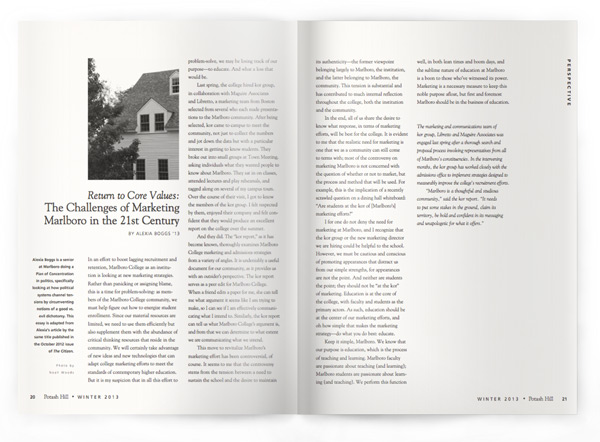
By Alexia Boggs ’13
In an effort to boost lagging recruitment and retention, Marlboro College as an institution is looking at new marketing strategies. Rather than panicking or assigning blame, this is a time for problem-solving: as members of the Marlboro College community, we must help figure out how to energize student enrollment. Since our material resources are limited, we need to use them efficiently but also supplement them with the abundance of critical thinking resources that reside in the community. We will certainly take advantage of new ideas and new technologies that can adapt college marketing efforts to meet the standards of contemporary higher education. But it is my suspicion that in all this effort to problem-solve, we may be losing track of our purpose—to educate. And what a loss that would be.
Last spring, the college hired kor group, in collaboration with Maguire Associates and Libretto, a marketing team from Boston selected from several who each made presentations to the Marlboro community. After being selected, kor came to campus to meet the community, not just to collect the numbers and jot down the data but with a particular interest in getting to know students. They broke out into small groups at Town Meeting, asking individuals what they wanted people to know about Marlboro. They sat in on classes, attended lectures and play rehearsals, and tagged along on several of my campus tours. Over the course of their visit, I got to know the members of the kor group. I felt respected by them, enjoyed their company and felt confident that they would produce an excellent report on the college over the summer.
And they did. The “kor report,” as it has become known, thoroughly examines Marlboro College marketing and admissions strategies from a variety of angles. It is undeniably a useful document for our community, as it provides us with an outsider’s perspective. The kor report serves as a peer edit for Marlboro College. When a friend edits a paper for me, she can tell me what argument it seems like I am trying to make, so I can see if I am effectively communicating what I intend to. Similarly, the kor report can tell us what Marlboro College’s argument is, and from that we can determine to what extent we are communicating what we intend.
 This move to revitalize Marlboro’s marketing effort has been controversial, of course. It seems to me that the controversy stems from the tension between a need to sustain the school and the desire to maintain its authenticity—the former viewpoint belonging largely to Marlboro, the institution, and the latter belonging to Marlboro, the community. This tension is substantial and has contributed to much internal reflection throughout the college, both the institution and the community.
This move to revitalize Marlboro’s marketing effort has been controversial, of course. It seems to me that the controversy stems from the tension between a need to sustain the school and the desire to maintain its authenticity—the former viewpoint belonging largely to Marlboro, the institution, and the latter belonging to Marlboro, the community. This tension is substantial and has contributed to much internal reflection throughout the college, both the institution and the community.
In the end, all of us share the desire to know what response, in terms of marketing efforts, will be best for the college. It is evident to me that the realistic need for marketing is one that we as a community can still come to terms with; most of the controversy on marketing Marlboro is not concerned with the question of whether or not to market, but the process and method that will be used. For example, this is the implication of a recently scrawled question on a dining hall whiteboard: “Are students at the kor of [Marlboro’s] marketing efforts?”
I for one do not deny the need for marketing at Marlboro, and I recognize that the kor group or the new marketing director we are hiring could be helpful to the school. However, we must be cautious and conscious of promoting appearances that distract us from our simple strengths, for appearances are not the point. And neither are students the point; they should not be “at the kor” of marketing. Education is at the core of the college, with faculty and students as the primary actors. As such, education should be at the center of our marketing efforts, and oh how simple that makes the marketing strategy—do what you do best: educate.
Keep it simple, Marlboro. We know that our purpose is education, which is the process of teaching and learning. Marlboro faculty are passionate about teaching (and learning); Marlboro students are passionate about learning (and teaching). We perform this function well, in both lean times and boom days, and the sublime nature of education at Marlboro is a boon to those who’ve witnessed its power. Marketing is a necessary measure to keep this noble purpose afloat, but first and foremost Marlboro should be in the business of education.
Alexia Boggs is a senior at Marlboro doing a Plan of Concentration in politics, specifically looking at how political systems channel tensions by circumventing notions of a good vs. evil dichotomy. This essay is adapted from Alexia’s article by the same title published in the October 2012 issue of The Citizen.
The marketing and communications team of kor group, Libretto and Maguire Associates was engaged last spring after a thorough search and proposal process involving representatives from all of Marlboro’s constituencies. In the intervening months, the kor group has worked closely with the admissions office to implement strategies designed to measurably improve the college’s recruitment efforts. “Marlboro is a thoughtful and studious community,” said the kor report. “It needs to put some stakes in the ground, claim its territory, be bold and confident in its messaging and unapologetic for what it offers.”
On & Off the Hill
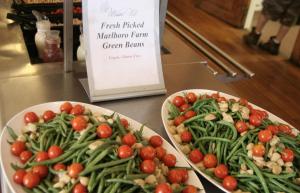 New faculty members, new greenhouse, new library books, oh my! Say farewell to storied sociology professor Jerry Levy and learn what environmental studies looks like in China.
New faculty members, new greenhouse, new library books, oh my! Say farewell to storied sociology professor Jerry Levy and learn what environmental studies looks like in China.
New greenhouse focuses interest in sustainability

Community members from campus and beyond gathered in October for the dedication of the new greenhouse on the Marlboro campus, located across the road from Persons Auditorium. The 700-square-foot, wood-and-glass structure is the culmination of three years of planning and community labor, and stands to be the focal point for students and faculty engaged in farming, renewable resources and other aspects of sustainable living.
“Some people who have contributed to the greenhouse are interested in agriculture, while others are involved with architecture or sustainable building, so there are a lot of different motivations,” said chemistry professor Todd Smith, who has been instrumental in keeping the project moving forward. “I certainly think a lot of people support the greenhouse, and farm, as a kind of demonstration of the college community’s interest in sustainability.”
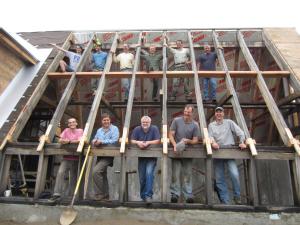 The greenhouse structure is made mostly of local or recycled materials, including local black locust and white oak timbers, pine siding and insulated glass recycled from Persons Auditorium. The design features a steep, glass roof facing south, a north wall built into the ground and a round entryway on the north side that doubles as a community meeting space.
The greenhouse structure is made mostly of local or recycled materials, including local black locust and white oak timbers, pine siding and insulated glass recycled from Persons Auditorium. The design features a steep, glass roof facing south, a north wall built into the ground and a round entryway on the north side that doubles as a community meeting space.
Students have long recognized the need for a greenhouse to connect the farm to the college, as a way to extend the growing season into the fall and spring when the college is in session. There have been two other greenhouses at this same site before, student-designed hoop houses that proved insufficient to survive the Vermont winters.
After students advocated for a sturdier structure, the design for this greenhouse was devised by student Kenton Card ’10, working with fellow students, staff and faculty, as part of his final Plan of Concentration. Kenny began milling local wood for the structure and collecting stones for the foundation and retaining walls that year, and the structure has steadily grown since then with the help of other community members.
“Kenny was interested in architecture, but also in how communities use spaces,” said Todd. “So he was very interested in how the greenhouse might serve to enhance activity at the farm and bring other community members down to the farm to get involved.”
“A lot of people don’t know where the farm is. I’ve run into this pretty frequently,” said sophomore Simeon Farwell-Miller, the current farm manager. “I think that visibility has been a problem in the past, but with the construction of the greenhouse the farm will be much more apparent. And we’re planning to plant flowers and medicinal herbs and other attractive things in front of the greenhouse, which should make it even more eye-catching.”
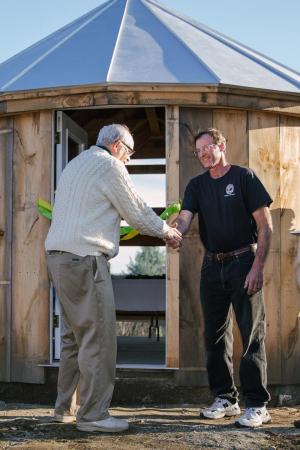 The greenhouse dedication comes at a time when awareness of local foods and other sustainable practices is growing on campus. The dining hall, under the dedicated guidance of general manager Richie Brown, is increasingly buying its raw ingredients from local or organic sources. The Environmental Quality Committee is stepping up efforts to recycle and compost, and the Food Committee is working with the community to eliminate the use of disposable cups. The farm, benefitting from its first summer with two fully paid managers, has supplied fresh food to both the coffee shop and the dining hall.
The greenhouse dedication comes at a time when awareness of local foods and other sustainable practices is growing on campus. The dining hall, under the dedicated guidance of general manager Richie Brown, is increasingly buying its raw ingredients from local or organic sources. The Environmental Quality Committee is stepping up efforts to recycle and compost, and the Food Committee is working with the community to eliminate the use of disposable cups. The farm, benefitting from its first summer with two fully paid managers, has supplied fresh food to both the coffee shop and the dining hall.
A key rationale for the greenhouse has been to draw more faculty and students to use the farm as a class resource for teaching or research. Todd Smith, for example, has based his General Chemistry Lab on the production of biofuels, growing sunflowers on the farm to collect the seeds, extract the oil and manufacture fuel. Other applications could range from growing experiments to farm poetry.
The official ribbon-cutting at the dedication was performed by Don Capponcelli, college carpenter, whose work was instrumental in the greenhouse’s completion and who has been a tireless advocate for the project. Present at the dedication were Bob Allen, president of the Windham Foundation, and neighbor David White, both of whom generously supported the greenhouse project. Other supporters, not able to be present, include Charles J. and Susan J. Snyder, Dr. Suzanne Olbricht and Jon A. Souder ’73. Kenny was enthusiastically present at the celebration via Skype from Germany, where he was attending a graduate program in architecture.
Marlboro takes environmental studies to China
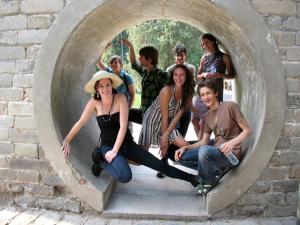 “It’s easy to forget how small the earth is when at Marlboro, where the air is clear and the trees are tall,” said writing professor Kyhl Lyndgaard. “Being in China made us aware of how pervasive human influence can be.”
“It’s easy to forget how small the earth is when at Marlboro, where the air is clear and the trees are tall,” said writing professor Kyhl Lyndgaard. “Being in China made us aware of how pervasive human influence can be.”
Kyhl was one of seven faculty and ten students who traveled to China for three weeks last summer to explore dimensions of environmental and social issues there. This was the last in a series of fruitful visits to Asia, including China, Japan, Vietnam and Cambodia, supported by two generous grants from the Freeman Foundation. The trip followed a seminar last spring called China’s Environmental Challenges, which laid the theoretical groundwork and practical background for the visit.
“The preparatory seminar helped us calibrate our expectations, but nothing prepared me for what we saw,” said economics professor Jim Tober, who has a special interest in environmental economics and policy. “One can read about rates of growth, construction booms, consumerism and so on, and still be totally taken aback by cities of 10 million, like Harbin, that seem to be materializing before our very eyes.”
Grant Li, professor of Chinese language, and Seth Harter, professor of Asian studies and history, were instrumental in making the trip rewarding through their logistical footwork and relevant knowledge. The group arrived in Beijing, a city of 20 million, and visited many of the nearby attractions, such as the Forbidden City, the Summer Palace and the Great Wall. But they also spent time meeting with local environmental agencies, activists and researchers, from the People’s University Legal Clinic for Pollution Victims to the Zhalong Crane Nature Reserve. At Heilongjiang University, in Harbin, they were joined by eight students of English, who acted as guides and translators and gave Marlboro students the opportunity to have home visits and other outings.
A highlight for Kyhl was the chance to reconnect with Chinese colleagues he had met when they were visiting scholars at University of Nevada, Reno. The reunion prompted a lively discussion at Beijing International Studies University, one of several opportunities for Marlboro students to talk about environmental issues on campuses in China.
Jim said, “There was much disagreement among students and faculty and others we met as to whether more substantive attention to environmental degradation would follow naturally from the production of wealth in China, such that the country could ‘afford’ improvements— after all, it was suggested to us, look at the same trajectory in U.S. history—or whether the rapidity and severity of decline called for a more aggressive response.” He found the Harbin Siberian Tiger Park a particularly fascinating insight into the public consumption of conservation and endangered species protection in China. Visitors to the park ride through caged areas to view tigers, ligers and lions, and feed them live animals for an extra price. “While the nominal purpose for the breeding program might be to reintroduce tigers into the wild, there has never been a reintroduction in China and it is not even clear that there is a reintroduction plan in place.”
“Environmental studies in China is even more complex because the systems at work are different than their American counterparts,” said junior Casey Chalbeck. “For me, to even begin to understand some of the environmental issues China is faced with required a strong and critical interdisciplinary approach that took me out of my intellectual comfort zone. Being able to study alongside such a diverse group of professors and students really facilitated this for me, and because of that I feel like a better student.”
Chinese partners host faculty
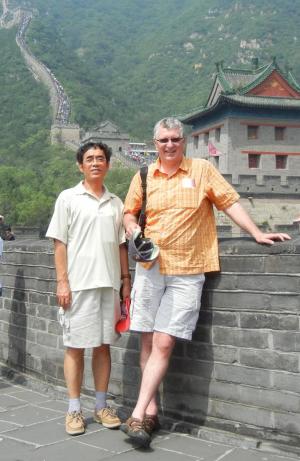 In July, Dean of Faculty Richard Glejzer joined Grant Li—who had stayed on at Heilongjiang University with three environmental studies trip students—and four more Marlboro students for a six-week language program (Potash Hill, Winter 2011). Together, the two Marlboro faculty members made great strides in establishing student exchange partnerships with both Heilongjiang and Jiamusi Universities.
In July, Dean of Faculty Richard Glejzer joined Grant Li—who had stayed on at Heilongjiang University with three environmental studies trip students—and four more Marlboro students for a six-week language program (Potash Hill, Winter 2011). Together, the two Marlboro faculty members made great strides in establishing student exchange partnerships with both Heilongjiang and Jiamusi Universities.
“Through our expanded international programming, funded in large part by the Christian Johnson Endeavor Foundation grant, we have been able to build up the infrastructure and awareness at Marlboro to welcome more international students,” said Richard. This includes Marlboro’s new English for Academic Purposes program, which gives second language speakers broad support for both written and spoken English, and other measures to make foreign students feel more at home.
“This trip was the first stage of what will be two valuable partnerships,” continued Richard. “Both universities highly value the academic model and liberal arts curriculum offered by Marlboro, and we look forward to welcoming their students.” The next stage in the partnership will be to welcome senior administrators from each university to Marlboro, starting with a visit from Heilongjiang in April.
New faculty express diverse points of view
By Christian Lampart ’16
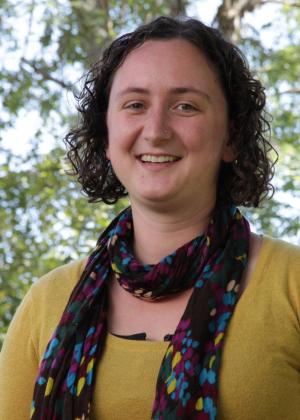 “From my experience as both student and teacher, I have found that the most memorable learning often occurs outside the classroom, when one applies knowledge to practice,” says Marlboro’s new sociology professor Katherine Rickenbacker. “Kat” is one of three new professors made welcome by Marlboro College this fall, in the areas of sociology, French and physics, each of them bringing fresh perspectives to the community.
“From my experience as both student and teacher, I have found that the most memorable learning often occurs outside the classroom, when one applies knowledge to practice,” says Marlboro’s new sociology professor Katherine Rickenbacker. “Kat” is one of three new professors made welcome by Marlboro College this fall, in the areas of sociology, French and physics, each of them bringing fresh perspectives to the community.
“I aim to send my students into the community when possible, to bridge the gap between theory and the ‘real world,’” explains Kat, who taught Introduction to Sociology and Inequality and “Natural” Disasters this fall. “I also believe that learning happens most effectively when students feel a sense of ownership of the course.”
Kat didn’t always know she would be a sociologist. “I fell into it,” she reminisces with a smile. “I went through five different majors as an undergrad before I had to declare. First I started with English, because I wanted to be a poet, which obviously has more job prospects than sociology. I finally settled on sociology, because it just made sense to me. Once I started graduate school, everything became so interesting.”
Kat received her bachelor’s degree in sociology, with a minor in environmental science and policy, from Smith College. She earned her master’s and doctorate in sociology from Northeastern University, with an emphasis in environmental sociology and the sociology of disaster and vulnerability. Her dissertation, “City Roots: Grassroots efforts to build social and environmental capital in urban areas,” examines small-scale urban greening projects in Dorchester, Massachusetts.
Kat is already applying her expertise in the area by joining Marlboro’s Environmental Quality Committee, which is responsible for facilitating environmental sustainability programs like recycling and composting on campus. She hopes to undertake some environmentally based projects with grassroots organizations in Brattleboro in the near future, continuing Marlboro’s service-learning pedagogy. As for teaching, Kat did not always know this was a strength.
“I almost left the program at Northeastern because one of the requirements was that you had to teach a class—just one,” Kat jokes. “I remember throwing up in the bathroom before my first class, because I was terrified of the 130 people sitting outside in that auditorium. But then I got hooked on it. Now it’s what I look forward to more than anything.” With a place as close-knit, yet independent, as Marlboro College, Kat is excited to discover alternative teaching methods to adjust for such a select group of students.
“Although I like the idea of small classes, I have never actually done this small,” marvels Kat, whose Introduction to Sociology class had only five students. “I think people here seem very interested in what they are doing and are really driven in whatever their individual projects are. Marlboro gives people who want to go to graduate school such an edge.”
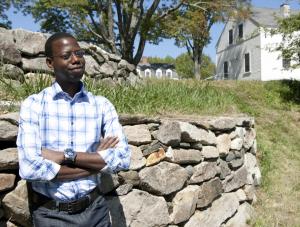 Marlboro’s new French professor, Boukary Sawadogo, has global experience, to put it mildly. Born in Abidjan, Cote d’Ivoire, “Abu,” has lived in Burkina Faso, where he grew up, as well as Ghana, Senegal, Iowa and Louisiana before finally ending up at Marlboro College.
Marlboro’s new French professor, Boukary Sawadogo, has global experience, to put it mildly. Born in Abidjan, Cote d’Ivoire, “Abu,” has lived in Burkina Faso, where he grew up, as well as Ghana, Senegal, Iowa and Louisiana before finally ending up at Marlboro College.
“Iowa, Louisiana, Vermont,” Sawadogo jokes. “It looks just like a circle. Where I came from in Africa, it was really hot. When I came to Iowa—very hot; Louisiana—still pretty hot. Now I’m here in Vermont. We do not even have a word for ‘snow’ in Burkina Faso, only ‘ice.’”
Abu received his bachelor’s degree in foreign languages, tourism and business from the University of Dakar, Senegal. He later went on to earn a graduate diploma in international relations from the Institute of Diplomacy & International Relations in Burkina Faso and a certificate for film production assistant from the University of Louisiana at Lafayette. He received his doctorate in Francophone studies from the University of Louisiana. His dissertation, “Altérité dérangeante et innovante dans le cinéma ouest-africain francophone de. 1990 à 2005,” examines the representation of marginal groups in francophone-African cinema.
“Precisely, I worked on the representation of the ‘mad man,’ the so-called ‘crazy person’ in film,” Abu explains. In addition, he has looked at the representation of homosexuals and women in African films. “I cannot say that women are ‘marginal groups’ because they represent 52 percent of the population in Africa. But I am interested in what happened in popular culture 200 or 300 years ago that put the traditional representation of women, once really powerful figures, on the margin.”
In addition to teaching French language and Francophone literature, and conducting a “French table” at the Twilight Tea Lounge in Brattleboro on Saturday afternoons, Abu looks forward to exploring issues of immigration and colonialism with his students—and of course African cinema. He delights in discovering, analyzing and interpreting depictions of change in filmography. Through the careful study of films that express the contravention of societal norms, Abu hopes to spark an interest in social progress in his students.
“Marlboro is small. But it’s not small in ideas,” Abu perceives. “I think that’s what matters. In terms of ideas and in terms of perspectives, Marlboro has nothing to envy of a larger university.” Abu remarked on the level of openness, care and concern for his well-being that has been expressed by Marlboro faculty since his first visit to the college. From colleagues helping to find him an apartment to others checking in on him when he missed soccer practice, he has felt very warmly welcomed.
“People were constantly checking up on me. I felt like others had my back here. Marlboro has flexibility, independence and a sense of community. It really speaks to me.”
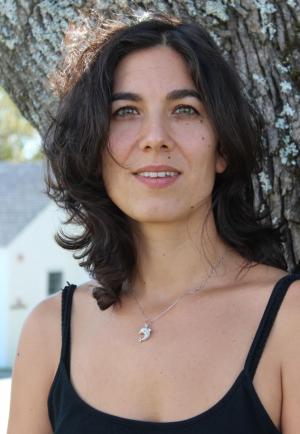 Sara Salimbeni, Marlboro’s new physics professor and a native of Rome, Italy, enjoys introducing students to some of the deepest mysteries of the universe. But she did not always know she would be an astronomer.
Sara Salimbeni, Marlboro’s new physics professor and a native of Rome, Italy, enjoys introducing students to some of the deepest mysteries of the universe. But she did not always know she would be an astronomer.
“When I was a child I wanted to be a painter,” Sara jests. “It didn’t work out.” Sara received her laurea in physics from the University of Rome, La Sapienza, and her doctorate in astronomy from the University of Rome, Tor Vergata. Her dissertation, “Cosmological evolution of galaxies from deep multicolor surveys,” examines how different galaxies have changed over billions of years.
“We have these wonderful pictures from the Hubble Space telescope, or telescopes in Chile and other parts of the world, from which we are able to understand many things that occur at different times,” Sara declares. “The light travels with a speed that is not infinite, so it takes time to get to earth. The farther away the galaxy you are watching, the more you are looking into the past.”
Sara is very much accustomed to an intimate academic setting and a relatively secluded place of study like Marlboro College. When she was working on her doctorate she did research at the Rome Observatory, located northwest of the city atop Monte Mario.
“It didn’t really feel like a university environment—it was fun,” Sara explains. “I was working with scientific researchers, not just professors. When I moved to the States in order to do postdoctorate work at UMass, I felt like I was missing something. I realized I needed to have an experience with students—I needed to teach.”
Sara spent a year teaching physics at the University of Massachusetts, Amherst, and then served as a visiting professor at Marlboro for a year, during which time she became a valued member of the community. Sara still thrives on her research, which she plans to continue, but now she wishes to find more overlap with the academic work of her students, to excite their interest. She hopes to find a balance between pursuing research and leading her day-to-day life with students in Marlboro’s tight-knit community.
“I was immediately impressed by the strong sense of community present at Marlboro,” says Sara. “I very much enjoy that the classes are small. I am able to work with each student in an individual way. When you have a big class, you tend to lecture. It’s very different to have four students in front of you, when you know they’ve read the material and you can discuss the most important things about the chapter. It’s a totally different kind of teaching.”
The Marlboro community welcomes these diverse faculty additions with excitement and regard, and looks forward to their many valuable and unique contributions to come.
Celebrating Jerry
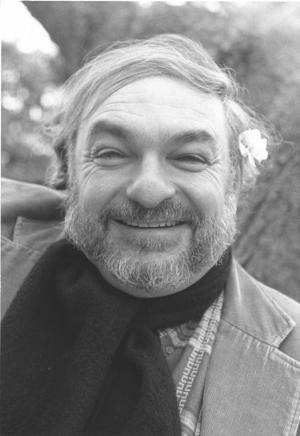 One of the highlights of the alumni reunion last May was a session organized by C.J. Churchill ’91 and Will Brooke-deBock ’87 to celebrate the career of Jerry Levy, Marlboro’s sociology professor since 1976. Potash Hill could not give Jerry a better retirement send-off than providing some choice excerpts from this session, in the words of his former students over the years.
One of the highlights of the alumni reunion last May was a session organized by C.J. Churchill ’91 and Will Brooke-deBock ’87 to celebrate the career of Jerry Levy, Marlboro’s sociology professor since 1976. Potash Hill could not give Jerry a better retirement send-off than providing some choice excerpts from this session, in the words of his former students over the years.
C.J. Churchill: I had no idea that I would be interested in sociology. I thought I was going to major in political science, but when I took Jerry’s Contemporary American Society course, I realized I found the thing I was looking for—and the teacher I was looking for. During my undergraduate years at Marlboro, Jerry taught me how to write and think like a sociologist and a humanist. I think he was bemused by my avid embrace of the Town Meeting political system, but as with so much else in life, he encouraged me to think of this activity ethnographically. In this endeavor as well as with the rest of life, Jerry taught me how to think like an outsider even while on the inside of a process. One of Jerry’s great gifts to his students was teaching them how to see the sorrows of the world with profound concern while also being able to understand the world with a sense of humor. We are all lucky to have had the pedagogical attention of this fine scholar and teacher. He has that rare commitment to the life of the mind and the care of the soul which striving, uncertain students attach themselves because they know through this they can realize the better parts of themselves that were otherwise hidden.
Will Brooke-deBock: Jerry has been at this college teaching sociology from Jimmy Carter to Barack Obama. And, I wanted to mention, everybody knows that Jerry has a very full, rich life as an actor, a politician, a musician, a chef and a writer. Jerry is good at a lot of things, and I have seen him do a lot of these things. I have eaten his meals, I have seen him act. Jerry is one of the greatest sociologists in this country, but what he is really a genius at is teaching students. I came to Marlboro College as a suburban kid who was very naive, who was an evangelical fundamentalist, and I teamed up with Jerry, kind of like Mutt and Jeff, the anarchist and the fundamentalist kid. Jerry was able to take somebody who was really unformed in a lot of ways and help me find the direction I wanted to go. So I really am indebted. And finally, I had the opportunity of sitting in Classical Sociological Thought again, 25 years after I took the course the first time, and I also got to sit in on a tutorial. Marlboro students are still exemplifying the experience we had. Jerry’s genius is in teaching, and Marlboro students, their genius is in learning.
Emilie Ring Read ’91: Jerry was my first adviser at Marlboro, and it was the most amazing experience for me, because he would look at my schedule and say “Look at all these different things you are studying. I wish I could do that.”
Sandi Huskey Oswalt ’91: I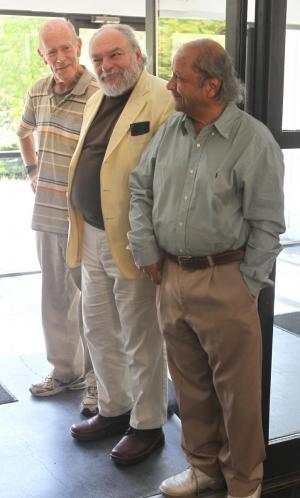 remember the first day of class at Marlboro— Jerry’s foreign policy. He warned us to be prepared, and I walked in the room and—this is so Marlboro—I sat down to a table of people and Jerry just sat back and said, “So….” And that was it, because we were expected to be prepared to discuss the material. That’s Marlboro: it wasn’t someone speaking at us, but someone teaching us to think.
remember the first day of class at Marlboro— Jerry’s foreign policy. He warned us to be prepared, and I walked in the room and—this is so Marlboro—I sat down to a table of people and Jerry just sat back and said, “So….” And that was it, because we were expected to be prepared to discuss the material. That’s Marlboro: it wasn’t someone speaking at us, but someone teaching us to think.
Heshan Berents-Weeramuni ’90: I entered Marlboro (from England) in 1987 and my mom said, “Listen, Reagan is president. This is a really, really conservative country you are going to. Be careful.” The very first person I met was Jerry. So much for that. One of the most generous things Jerry has shown me, intellectually, is his ability to look at society and show us how the magician’s hand moves slightly too slowly, and you can see how the trick is done, and that is a perspective that is indescribable.
Wendy Levy ’97: There were many questions that were sort of tumbling around in my head from high school and my upbringing—I was finally getting some answers to them from sociology. One of the comforting things was, I wasn’t the only one asking these questions: why are things so weird where I come from, why are things so weird everywhere, who’s controlling these things? And in Jerry’s classes those things started coming together. Every day I still use things I learned from Jerry’s class. I finally got to see Marx in Soho. What is it that Jerry can’t do?
Laura Hinerfeld ’93: When you are doing sociology and finding out how all these forces work you can go to these very dark places. But from Jerry there was always joy.
John Coakely ’02: What I love about Jerry as a teacher is that he lets you challenge yourself. I showed up here and wanted to study education, and I said, “So Jerry, do you want to do a tutorial on really interesting and alternative schools?” And he said “Okay, we can do it at five o’clock on Thursday afternoons, but I am going to get really tired.” I said, “Do you want me to get you some coffee for that?” He said, “No, I just may fall asleep.” And in that tutorial he made me read at least a book a week and told me to interview people doing interesting schools. It was great, and it was about the same amount of work I did in some of my graduate seminars.
Jaysinh Birjepatil, retired literature professor: Somebody said that everything Jerry does turns to gold. Whether it’s teaching, acting solo, or just being a human being. I remember we taught a class on the Holocaust together, and took the students to the Holocaust Museum in Washington, D.C., a place where there were just voices retelling their suffering. And Jerry sat down and started crying like a baby along with the students. He is somebody who is not an abstraction, although he can deal with very abstract topics. He brings a kind of honest nature that responds to stimulus without being ashamed of being a teacher weeping at a museum. He is really the most genuine person I have met in my life.
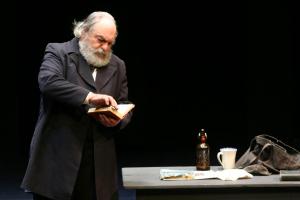 Jerry: I am just amazed at how many of you have turned out and how I remember every one of you, and what you did on your Plan. So many of you did such remarkable work that I wish you could just go to the library and read some of these Plans. And I am so gratified that I have had such influence on you, and I just want to say this: to an extent, if I was such a good teacher, it was because you came here with a seriousness and a sense of purpose that is profound. Each one of you—I am looking; I don’t see any exceptions—each one of you was so serious about your work, whether you were ready to do the work or not, whether you could write or not, you wanted something special.
Jerry: I am just amazed at how many of you have turned out and how I remember every one of you, and what you did on your Plan. So many of you did such remarkable work that I wish you could just go to the library and read some of these Plans. And I am so gratified that I have had such influence on you, and I just want to say this: to an extent, if I was such a good teacher, it was because you came here with a seriousness and a sense of purpose that is profound. Each one of you—I am looking; I don’t see any exceptions—each one of you was so serious about your work, whether you were ready to do the work or not, whether you could write or not, you wanted something special.
Listen to a full recording of comments at Jerry’s reception.
Also retiring this year is Paul Nelsen, theater professor for 35 years. Potash Hill will give Paul a fond farewell in the Summer 2013 issue.
Galbraiths leave library legacy
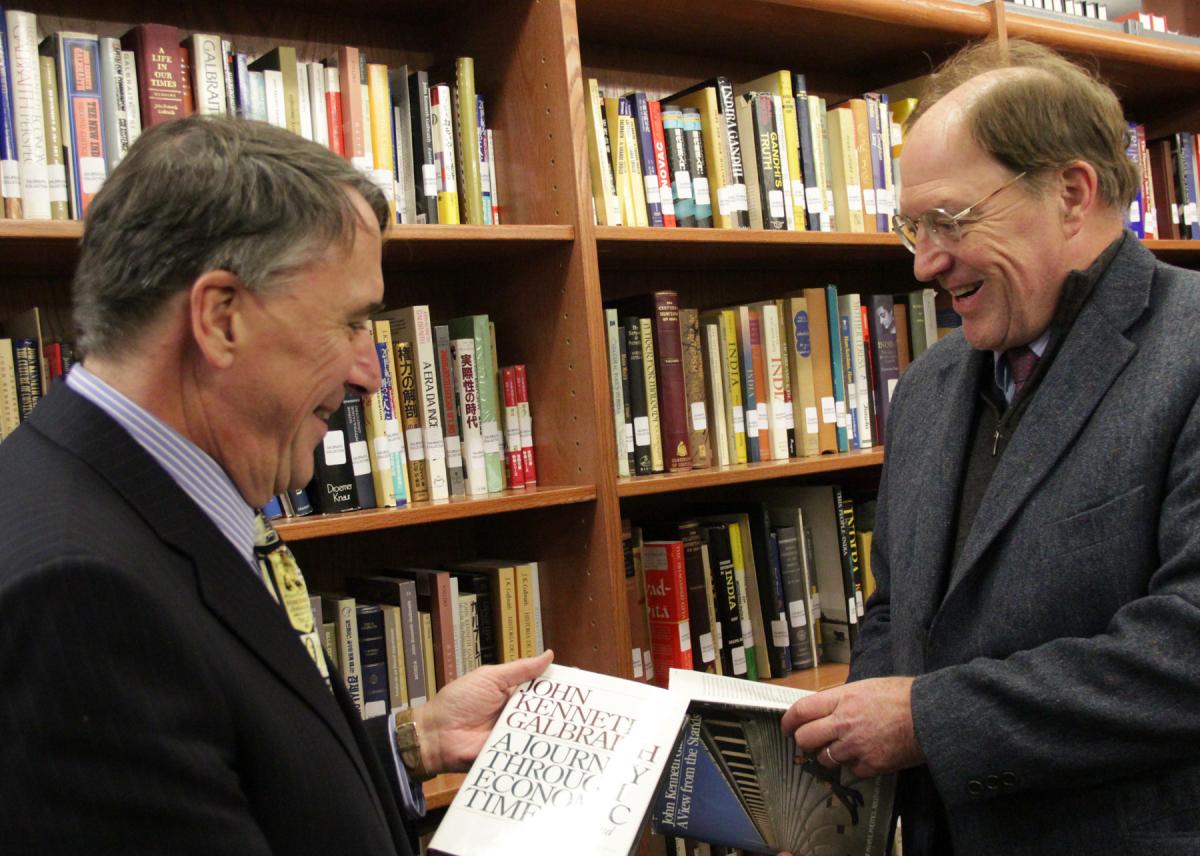 In November, Marlboro dedicated the John Kenneth and Catherine Atwater Galbraith Library Collection, a gift from their sons Peter, James and Alan in recognition of their parents’ relationship with Marlboro as trustee, friend and neighbor. James Galbraith and Peter Galbraith, a current Marlboro trustee, each offered their views on the legacy of their father in a symposium following the dedication.
In November, Marlboro dedicated the John Kenneth and Catherine Atwater Galbraith Library Collection, a gift from their sons Peter, James and Alan in recognition of their parents’ relationship with Marlboro as trustee, friend and neighbor. James Galbraith and Peter Galbraith, a current Marlboro trustee, each offered their views on the legacy of their father in a symposium following the dedication.
“A library is a window into the lives of the people that built it,” said Emily Alling, library director, in her dedication comments. “Looking through the books that now sit on these shelves, one certainly finds that the academic interests and career paths of both Galbraiths are robustly represented. But alongside biographies of prominent politicians, we find a worn copy of Dr. Spock’s Baby and Child Care. Books on Vermont are nestled in among books on India and China. Edward Gorey’s Amphigorey is interfiled with classic works of literature.”
Emily added, “In the months since the collection has been installed and shelved, many people have expressed surprise and delight at being able to view and even handle books belonging to one of the 20th century’s most prominent public intellectuals. The collection is located such that every admissions tour on campus pauses next to it as they wait to enter the Plan Room, where Marlboro graduates’ Plans of Concentration are shelved. It is fitting that prospective students and their families are welcomed to Marlboro by a collection of books that reflects so many of our institutional interests—a global perspective, economics and sustainability, the study of languages and literature—as well as the college’s historical and ongoing connections with the Galbraith family.
And More
Anthropology professor Carol Hendrickson hosted a four-week visit this fall from her friend and colleague Ana Gloria Ajzac Tetzagüic, who works with women’s groups in Guatemala on a range of projects, from microfinancing to gender rights. Gloria spoke with Carol’s Food and Culture class, participated in the World Studies Colloquium, interacted with Spanish language students and enjoyed being part of campus life. Photo by Dianna Noyes
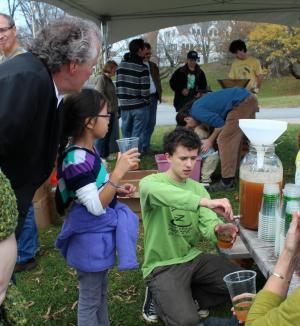 Students press fresh cider with the help of family members at Family Day in October. Other highlights were academic sessions, from “kitchen-chemistry” to dance choreography, as well as hiking, clambering up the climbing wall and dancing to live music from The Horse Flies. Photo by Elisabeth Joffe
Students press fresh cider with the help of family members at Family Day in October. Other highlights were academic sessions, from “kitchen-chemistry” to dance choreography, as well as hiking, clambering up the climbing wall and dancing to live music from The Horse Flies. Photo by Elisabeth Joffe
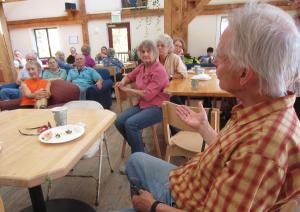 Retired biology professor Bob Engel holds forth on the intricacies of ornithology at the October “seniors’ lunch.” The monthly event invites area elders to enjoy the sunny campus center, a scrumptious lunch provided by the dining hall crew, and each other’s company. Photo by Dianna Noyes
Retired biology professor Bob Engel holds forth on the intricacies of ornithology at the October “seniors’ lunch.” The monthly event invites area elders to enjoy the sunny campus center, a scrumptious lunch provided by the dining hall crew, and each other’s company. Photo by Dianna Noyes
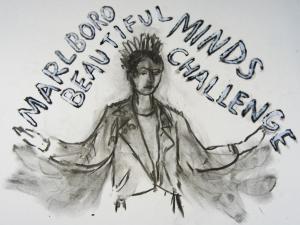 Beautiful Minds come to Marlboro: “One of Marlboro’s greatest strengths is the opportunity for students and faculty to work across disciplines and engage with meaty questions that have real-world implications,” says Ariel Brooks, director of non-degree programs at Marlboro. This was the idea behind the Beautiful Minds Challenge, a contest to attract innovative high school students from across the country. Teens were invited to create an original expression of beauty that pulled from multiple perspectives or took an innovative approach, in response to the prompt, “Make something beautiful. Say why it is.” Submissions were due in December, and 20 contestants will win a trip, expenses paid, to a student symposium at Marlboro College in February. Illustration by Raf Kelman ’09
Beautiful Minds come to Marlboro: “One of Marlboro’s greatest strengths is the opportunity for students and faculty to work across disciplines and engage with meaty questions that have real-world implications,” says Ariel Brooks, director of non-degree programs at Marlboro. This was the idea behind the Beautiful Minds Challenge, a contest to attract innovative high school students from across the country. Teens were invited to create an original expression of beauty that pulled from multiple perspectives or took an innovative approach, in response to the prompt, “Make something beautiful. Say why it is.” Submissions were due in December, and 20 contestants will win a trip, expenses paid, to a student symposium at Marlboro College in February. Illustration by Raf Kelman ’09
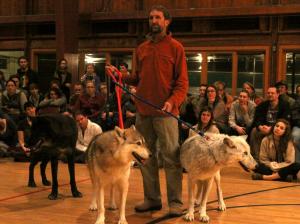 In October, Kent Webber, director of the Colorado-based Mission:Wolf sanctuary, shared three of his captive-raised ambassador wolves with an entranced crowd in Persons Auditorium. The event was hosted by Adam Katrick ’07 and biology professor Jaime Tanner. Photo by Patrick Lancaster
In October, Kent Webber, director of the Colorado-based Mission:Wolf sanctuary, shared three of his captive-raised ambassador wolves with an entranced crowd in Persons Auditorium. The event was hosted by Adam Katrick ’07 and biology professor Jaime Tanner. Photo by Patrick Lancaster
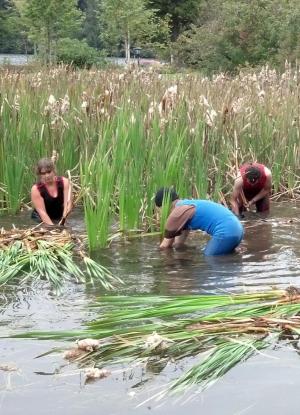 Students gather cattails for weaving and cordage as part of a forest skills workshop, a recurring event on and around campus led by juniors Mason Jones and Ariel Victor Qadesh. New students from the Bridges orientation trip titled Apocalypse Soon are frequently joined by others as they build shelters, look for edible and medicinal wild plants and learn survival skills.
Students gather cattails for weaving and cordage as part of a forest skills workshop, a recurring event on and around campus led by juniors Mason Jones and Ariel Victor Qadesh. New students from the Bridges orientation trip titled Apocalypse Soon are frequently joined by others as they build shelters, look for edible and medicinal wild plants and learn survival skills.
Worthy of note
Last summer, ceramics professor Martina Lantin and art history professor Felicity Ratté (right) spent two weeks in Turkey, conducting research for a trip with their spring 2013 class, Art on the Walls: Ceramic Tiles in Seljuk and Ottoman Architecture, Meaning and Design. “The course is designed to give students a hands-on, practitioner’s introduction to the design, style and history of Islamic architectural tile,” said Felicity. Their travels took them from a contemporary tile-manufacturing workshop in Kutahya to Bursa, the Ottoman Empire’s first capital, to Iznik, renowned for its ceramic work in the 16th century. “We left Turkey with a course mapped out and the itinerary planned for students. We are excited by the many questions fresh in our minds and the vast array of inspiration in our heads.”
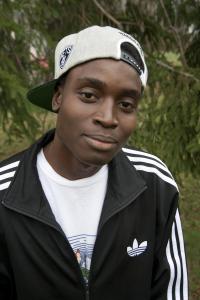 “Music and dance are a big part of culture in Medellin, which was like another Queens for me,” said senior Kalie Kamara (left), who spent eight weeks in a Spanish language intensive in Columbia. He stayed with an older couple but met many young people in neighborhood parks and was pleased to find that hip hop music was also very popular there. Kalie took language classes every morning, and spent his evenings doing homework and writing rhymes in Spanish to rap with his new friends. “My style was definitely fresh for them to hear, and they knew I was trying. I tried every day. Every moment those kids asked me, and I had enough feeling for it, I freestyled my verses en Español.”
“Music and dance are a big part of culture in Medellin, which was like another Queens for me,” said senior Kalie Kamara (left), who spent eight weeks in a Spanish language intensive in Columbia. He stayed with an older couple but met many young people in neighborhood parks and was pleased to find that hip hop music was also very popular there. Kalie took language classes every morning, and spent his evenings doing homework and writing rhymes in Spanish to rap with his new friends. “My style was definitely fresh for them to hear, and they knew I was trying. I tried every day. Every moment those kids asked me, and I had enough feeling for it, I freestyled my verses en Español.”
“In Emplumada, Chicana poet Lorna Dee Cervantes uses natural imagery to chart a kind of ecological map that records the roots, and routes, that conform to her hybrid identity,” said Spanish professor Rosario deSwanson. In November, Rosario presented a paper on Cervantes and chaired a panel at the New England Council of Latin American Studies (NECLAS) meeting on New Perspectives on Latino Literature and Education, held at Yale University. She also published an article in Hispania, on a feminist Mexican adaptation of Oscar Wilde’s Salome, and a paper on Uruguayan and Argentinian writers in Hispanic Journal.
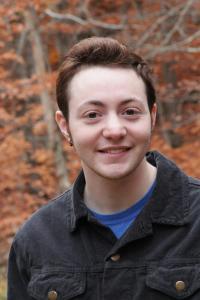 “I’m a literature person, but this is well off the path of what I’ve ever worked on at Marlboro,” said Marlboro junior Adam Halwitz (right), referring to his short story “Power Out.” The piece was featured in a new volume of literary fiction by transgender authors called The Collection, published in October by Topside Press. The Collection features many leading North American authors in this genre, so Adam is understandably proud. “When I saw what the book actually looked like—and there were several stages, each of which got more and more nerve-racking and wonderful—I was even more honored to have been included.”
“I’m a literature person, but this is well off the path of what I’ve ever worked on at Marlboro,” said Marlboro junior Adam Halwitz (right), referring to his short story “Power Out.” The piece was featured in a new volume of literary fiction by transgender authors called The Collection, published in October by Topside Press. The Collection features many leading North American authors in this genre, so Adam is understandably proud. “When I saw what the book actually looked like—and there were several stages, each of which got more and more nerve-racking and wonderful—I was even more honored to have been included.”
“Vermont is known for a lively and varied artistic life,” wrote Ellen McCulloch-Lovell, Marlboro president. “We boast that we are home to more artists per capita than any other state.” Ellen’s essay on the history of the arts in Vermont, “Vermont’s Creative Spirit: Arts and Arts Organizations,” appears in a new book, The Vermont Difference, to be published in 2013. She was also a featured speaker at the Landmark College academic speaker series titled “Turning Points: Making Choices in Politics, Science and Health,” in November. Ellen offered a behind-the-scenes look at the presidential elections based on her years in the Clinton Administration and as chief of staff to U.S. Senator Patrick Leahy.
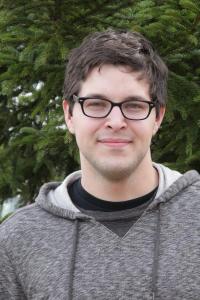 Last summer, sophomore Michael Sirois (left) spent six weeks at Freie Universität Berlin (FUBiS), improving German speaking and writing skills. “While I would still describe myself as far from fluent, I can now converse easily (if somewhat slowly) in German in most situations,” said Michael. He found that one of the most useful outcomes was establishing German-speaking friends and contacts. “So far, I’ve given my curry recipe in German to a FUBiS friend in Norway, I’m in the middle of a lengthy Facebook conversation in German about the history of rap with another friend from North Carolina, and I Skype weekly in German with yet another friend who lives in Frankfurt. All of this means that I’m learning German organically and independently outside of a classroom.”
Last summer, sophomore Michael Sirois (left) spent six weeks at Freie Universität Berlin (FUBiS), improving German speaking and writing skills. “While I would still describe myself as far from fluent, I can now converse easily (if somewhat slowly) in German in most situations,” said Michael. He found that one of the most useful outcomes was establishing German-speaking friends and contacts. “So far, I’ve given my curry recipe in German to a FUBiS friend in Norway, I’m in the middle of a lengthy Facebook conversation in German about the history of rap with another friend from North Carolina, and I Skype weekly in German with yet another friend who lives in Frankfurt. All of this means that I’m learning German organically and independently outside of a classroom.”
“My mailbox is the source for about 18 percent of the school’s recycling haul, from the flyers for the erotic hypnotist to the pamphlets for the indie-band-with-an-environmental-message, to (my favorite of all time) a letter asking me to shell out hundreds of dollars to buy the rights to a four-line poem that, if placed correctly on magnets, mugs, and bumper stickers, will most assuredly create a sense of campus community.” So writes Ken Schneck, Marlboro’s dean of students and author of a Huffington Post blog on college life. From the impact of social networking to the pitfalls of discrimination, Ken finds something witty to say about every aspect of life on campus.
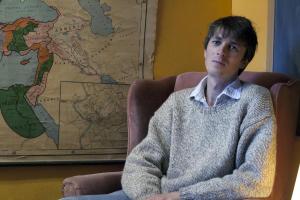 “The best thing about doing a teaching fellowship at Marlboro is teaching bright and engaging students,” said Evelyn Richardson (right), Marlboro’s 32nd classics fellow from Oxford, who was welcomed to the community in August. “I’ve been impressed by the confidence students here have to think originally.” Evelyn received his bachelor’s in classics and Arabic from Oxford, and received the Chancellor’s Latin Verse Prize and the Richard Hillary Creative Writing Prize in 2011. He is interested in studying the interaction between Greek and Roman culture, especially from the Roman perspective. “It’s a complicated and often contradictory story that can be traced on many levels—not just in poetry and visual art but also in really fine details of social behavior.”
“The best thing about doing a teaching fellowship at Marlboro is teaching bright and engaging students,” said Evelyn Richardson (right), Marlboro’s 32nd classics fellow from Oxford, who was welcomed to the community in August. “I’ve been impressed by the confidence students here have to think originally.” Evelyn received his bachelor’s in classics and Arabic from Oxford, and received the Chancellor’s Latin Verse Prize and the Richard Hillary Creative Writing Prize in 2011. He is interested in studying the interaction between Greek and Roman culture, especially from the Roman perspective. “It’s a complicated and often contradictory story that can be traced on many levels—not just in poetry and visual art but also in really fine details of social behavior.”
“The Plan isn’t just an academic accomplishment,” said one student quoted in Colleges That Changes Lives: 40 schools That Will Change the Way You Think About Colleges. “It’s an opportunity to explore something I care about. No matter what you’re doing, it’s driven by passion.” Marlboro College was pleased to be featured once again in the fourth edition of CTCL, the perennially popular guide to profound learning experiences, as it has since the first edition in 1995. According to the new edition, “Marlboro is a transformative place that turns out the essential leaven of democracy: bold, clear thinkers; people of vision and character. Quite simply, the college fulfills the promise of liberal education.”
For more information on:
Felicity Ratté and Martina Lantin
Adam Halwitz
Ken Schneck
Marlboro College
Or for the most up-to-date scoop:
Potash Phil
Facebook
Youtube
Twitter
Alumni News
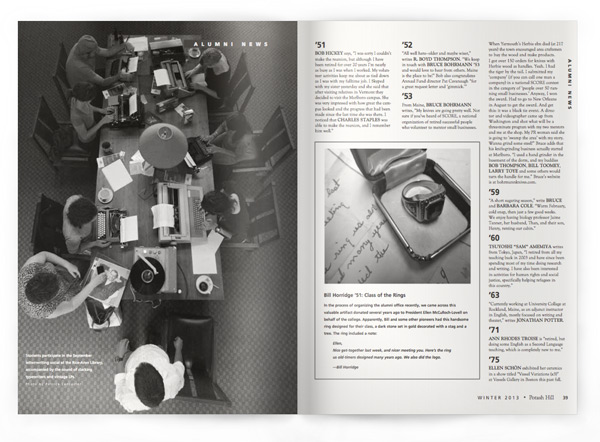
’51
BOB HICKEY says, “I was sorry I couldn’t make the reunion, but although I have been retired for over 20 years I’m nearly as busy as I was when I worked. My volunteer activities keep me about as tied down as I was with my fulltime job. I Skyped with my sister yesterday and she said that after visiting relatives in Vermont they decided to visit the Marlboro campus. She was very impressed with how great the campus looked and the progress that had been made since the last time she was there. I noticed that CHARLES STAPLES was able to make the reunion, and I remember him well.”
’52
“All well here—older and maybe wiser,” writes R. BOYD THOMPSON. “We keep in touch with BRUCE BOHRMANN ’53 and would love to hear from others. Maine is the place to be!” Bob also congratulates Annual Fund director Pat Cavanaugh “for a great request letter and ‘gimmick.’”
Bill Horridge ’51: Class of the Rings
In the process of organizing the alumni office recently, we came across this valuable artifact donated several years ago to President Ellen McCulloch-Lovell on behalf of the college. Apparently, Bill and some other pioneers had this handsome ring designed for their class, a dark stone set in gold decorated with a stag and a tree. The ring included a note:
Ellen, Nice get-together last week, and nicer meeting you. Here’s the ring us old-timers designed many years ago. We also did the logo.
—Bill Horridge
’53
From Maine, BRUCE BOHRMANN writes, “My knives are going pretty well. Not sure if you’ve heard of SCORE, a national organization of retired successful people who volunteer to mentor small businesses. When Yarmouth’s Herbie elm died (at 217 years) the town encouraged area craftsmen to buy the wood and make products. I got over 150 orders for knives with Herbie wood as handles. Yeah. I had the tiger by the tail. I submitted my ‘company’ (if you can call one man a company) in a national SCORE contest in the category of ‘people over 50 running small businesses.’ Anyway, I won the award. Had to go to New Orleans in August to get the award. And get this: it was a black tie event. A director and videographer came up from Washington and shot what will be a three-minute program with my two mentors and me at the shop. My PR woman said she is going to ‘swamp the area’ with my story. Wanna grind some steel?” Bruce adds that his knife-grinding business actually started at Marlboro. “I used a hand grinder in the basement of the dorm, and my buddies BOB THOMPSON, BILL TOOMEY, LARRY TOYE and some others would turn the handle for me.” Bruce’s website is at bohrmannknives.com.
’59
“A short sugaring season,” write BRUCE and BARBARA COLE. “Warm February, cold snap, then just a few good weeks. We enjoy having biology professor Jaime Tanner, her husband, Than, and their son, Henry, renting our cabin.”
’60
TSUYOSHI “SAM” AMEMIYA writes from Tokyo, Japan, “I retired from all my teaching back in 2003 and have since been spending most of my time doing research and writing. I have also been interested in activities for human rights and social justice, specifically helping refugees in this country.”
’63
“Currently working at University College at Rockland, Maine, as an adjunct instructor in English, mostly focused on writing and theater,” writes JONATHAN POTTER.
’71
ANN RHODES TROISE is “retired, but doing some English as a Second Language teaching, which is completely new to me.”
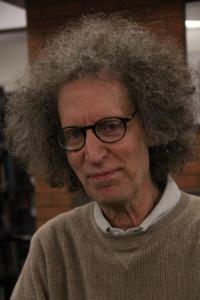 Robert Hullot-Kentor ’71 and Jake Davis ’03: Waxing Philosophical
Robert Hullot-Kentor ’71 and Jake Davis ’03: Waxing Philosophical
In October, two Marlboro alumni presented public lectures on campus. Jake Davis ’03 presented a talk at Ragle Hall entitled “Attention and the Qualities of the Heart,” drawing from recent empirical research on attention, consciousness and emotion. A doctoral student in philosophy and cognitive science at the Graduate Center of the City University of New York and a visiting scholar at Brown University, Jake made a case for a timely thesis that lies at the heart of Buddhist ethics.
Robert Hullot-Kentor ’71 (right) gave a talk in the Rice-Aron Library reading room called “The Origin of Space: Why are we unable to know what we know about the climate?” Robert discussed our knowledge of climate change in the context of what he calls the “space of equality,” where equal elements are indifferent to where they are. He is the chair of the master’s program in critical theory and the arts at the School of Visual Arts, translator of several works by T.W. Adorno and author of Things Beyond Resemblance.
Robert said, “It is a pleasure seeing my much admired former teacher T. Wilson— who long ago sent me off to Iowa City, and who is now my colleague—to meet new colleagues here, especially William Edelglass, my host, and to hear how this remarkable, important college is doing. I would wish this experience for each of the students here this evening.”
’75
ELLEN SCHÖN exhibited her ceramics in a show titled “Vessel Variations (x3)” at Vessels Gallery in Boston this past fall.
WENDY WILLIAMS has a new book, The Dialectic of Love, an examination of love and sexuality in the novels of D.H. Lawrence.
’78
REGGIE BLASZCZYK lives in the Bella Vista section of Philadelphia with her husband, Lee O’Neill, and a flock of 17 birds. She has published a new book, The Color Revolution, with The MIT Press. Starting in spring 2013, she will be professor of history and chair in the history of business and society at the University of Leeds in the United Kingdom.
NAT SIMKINS had “new paintings in Art in the Barn and Gallery 55 in Natick, Massachusetts, and has a new website, natsimkins.com. Viewed Frank Stout’s website with some great art—nice site. My 14-year-old granddaughter graduated from eighth grade and is a member of the junior honor society.”
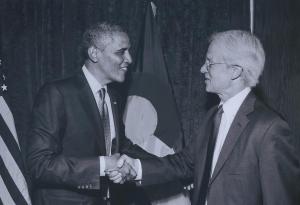 ’79
’79
“Blessed in the endless mountains of northeast Pennsylvania,” writes ED McMULLEN. “‘A loaf of bread, a jug of wine and book of verse. Ah, wilderness.’”
’80
“Hello, Marlboro,” writes LORI KIRSTEIN. “Well, after 30 years of sitting in cubicles, I have made a break for it. I am singing around the East Bay Area of California (jazz, blues, R&B, pop, classical), and I am going for my dream of a fulltime creative life that includes film (acting, directing, producing). I’m specifically working on films that have depth and meaning and that inspire and inform in various ways, so that consciousness and hope are lifted and new (or should I say better?) human choices are highlighted and made more available to actually put into play. Also, offering a very new combination of authenticity/empowerment speaking and performance to groups, plus coaching to individuals. Marlboro people don’t grow old—we just keep growing, yeah? Peace and love, y’all.”
’81
TRICIA LOWREY LIPPERT writes, “I still work at Mt. Bethel Animal Hospital in Mt. Bethel, Pennsylvania. I’ve been there 11 and a half years now. I had my first ever solo art show in New York City this past fall at the 1199SEIU. I continue to bake for the Ship Inn in Milford, New Jersey, and also make a weekly vegan special. We use as much locally grown organic produce as we can, use local farmers for our meats and brew our own beer. If you are ever driving down along the Delaware River you should check us out. I belong to a plein air painting group called “Come Paint with Me,” which paints together on location from June until October. I also take Zumba Gold classes twice a week and absolutely love it. Lonnie and I will be celebrating our 30th in April. We still have a dog and a collection of cats (eight).”
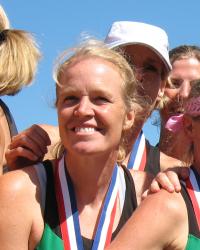 Elizabeth Glenshaw ’81: Rowing Wild
Elizabeth Glenshaw ’81: Rowing Wild
Although she is managing director of Clean Yield Asset Management during business hours, Marlboro trustee Elizabeth Glenshaw has been seriously into rowing the past few years. In 2012 she medaled at the Masters Nationals in a four-person boat for the age group 50–55, and this fall she got gold in masters races for eight-person boats both at the Lowell Textile Regatta and at the New Hampshire Championships.
“I am about to go down to the Head of the Charles next weekend,” said Elizabeth. “This is my sixth time competing in this event, with last year being the most special as my daughter Hannah (age 16 at the time) was the coxswain for my boat.”
BEN SARGENT and MARY LIN ’87 were married in January and have moved to Denver, where they have formed Luminous Thread, a new opera and theater company. They are producing the 2012–13 “Dreampunk” season of original shows and invite all to check out their work at luminousthread. com and inventingearth.org.
DAN PICKER submitted the following poem in memory of Edmund Brelsford:
Edmundo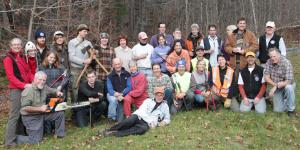 It wasn’t planned
It wasn’t planned
it was August
I was headed down
the mountain you were headed up;
now I must pause to make sure
I’m remembering it right.
Bright warm sun all around us,
you half hanging out your driver’s side
window rolled all the way down,
that thin left arm dangling loose
relaxed like a skier on a slope
taking it all in as if you couldn’t
get enough, or as if you’d
done it all seen it all reflecting on
a life well spent just there
one day I headed down Route 9
you headed up Route 9 slow carving
curving leisurely taking all that
August sun in an open window
passing beside mine.
’85
MEG SPICER is “living in South Newfane, Vermont, with my partner Lisa and our 11-year-old son, Max (avid Sox fan and aspiring Sox player, according to his plan). I work as a counselor at nearby Landmark College.”
’86
“I have finally finished my dissertation, ‘Paper Towns: Sense of Place in Industrial, Small-Town New England, 1869–1927’” writes DAVID DEACON. “I have been working on it since the last millennium with Elisabeth Lasch-Quinn at Syracuse. In the dissertation I look at the impact of the pulp and paper industry on Bellows Falls, Vermont, Franklin, New Hampshire, and Turners Falls, Massachusetts, drawing on landscape history, photography, history of technology and organized labor. Now all I need is a decent job.”
’89
GEORGE CASEY’s story “Thirty Thieves and Two Princesses” appears in serial format in the magazine Orion’s Child: Science Fiction and Fantasy Magazine.
’90
DAVID BOZETARNIK writes, “Since last August I have been living in Dubai, UAE, where I teach foundations English for the Higher Colleges of Technology at the Sharjah women’s campus. If anyone is considering employment in either Saudi or the UAE, I can help out with Q&A support. I still use my yahoo email: wsp_wip@yahoo.com.”
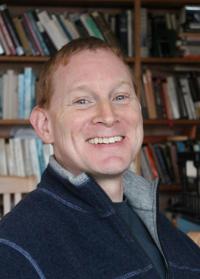 Brian Mooney ’90: Better than Cats
Brian Mooney ’90: Better than Cats
John Updike said, “Most of American life consists of driving somewhere and then returning home, wondering why the hell you went.” Brian Mooney returned home to Marlboro this year, again, as a visiting professor of creative writing and literature.
“It’s very nice to be back,” said Brian, who was also a visiting professor between 2003 and 2007. “I love working with students who are willing to take risks with their work, and who so readily incorporate what they read and write into their daily lives in order to become ever better citizens of the class, the community and the world. I like it better than Cats,” he added, and when asked whether he meant the Broadway show or the mammal, he said, “Both.”
Brian received his M.F.A. in English from the University of Massachusetts, Amherst, in 1999, and has been senior faculty in creative writing for The Putney School Summer Programs since 1998. His publications include a wide range of poetry, fiction and nonfiction, and his current book, Everything Is Something: The Story of Jamestown in 20 Artifacts, is due to be published in 2013 by the Colonial Williamsburg Foundation. Brian is also the inventor of the Storymatic, a writing prompt, teaching tool, parlor game and toy all in one box: thestorymatic.com.
’92
MICHAEL CRANE started a position with the Emirate of Abu Dhabi this fall as their environmental economist. “They have a national sustainability program called Estidama (www.estidama.org) and I will focus on designing and drafting new sustainable development policies to implement their sustainable vision and expand on current programs,” he writes.
“After 20 years in the entertainment industry I gave myself a three-month sabbatical this summer,” LAURA FRANK writes. “As a professional traveler, I got what I wanted most: an entire season at home, except for a vacation week in Spain with my husband, Dan. I plan to do it again, maybe in five years this time. Sending good wishes to all those 40-somethings I went to school with.”
CHRISTINA FUHRMANN’s critical edition of Henry Bishop’s 1819 adaptation of the Marriage of Figaro was recently published with A-R Editions.
’93
ALICIA (TATTIE) BRELSFORD competed in the 2012 London Summer Paralympics in the handcycling division.
Marlboro Launches Alumni Admissions Program
What separates loyal Marlboro alumni from the thousands of prospective future students across the country? Very little, now that the college has launched a Marlboro Alumni Admissions Program (MAAP) to facilitate alumni involvement in student recruitment. Through MAAP, dozens of alumni are helping admissions efforts, including interviews, high school visits and calls to accepted students.
“We strongly believe that graduates of Marlboro offer an essential perspective on the unique nature of a Marlboro education that is crucial to the search for future students,” said Nicole Curvin, dean of admissions. Find out more.
’95
MARK GENSZLER sends his “warmest regards to the Marlboro posse and suggests they come visit in New York, where I’m studying to be an Episcopal priest. Well, that’s what I do when I’m not riding my bike around the city, which is both vocation and education (and pleasure) in itself. Oh, and friends: I made my small annual gift to the rare and valuable place that is Marlboro, and I urge you to do the same, whatever your means. Really. I hope this finds you all happy and healthy.”
DEIRDRE PYLE is “busy raising our two little girls in Seattle. Still doing geopolitical research for Microsoft—it sounds top secret, and it is! Love to all.”
KRISTIN ANDERSON traveled to Nicaragua in March with two other nurses from Brattleboro Memorial Hospital to teach a course on breast-feeding initiation and management to nurses and doctors at a hospital in Leon. They held a fundraiser in November for a return trip in 2013 to expand on that work, including establishing a room dedicated to mothers and their babies, and to make connections with other hospitals in the country.
’97
“Got married in November 2011 to Dennis Byford,” writes SAMONIA MEREDITH BYFORD. “Am now mother to twin 17-year-old boys. Busy renovating our historic home in Oklahoma City.”
WENDY LEVY opened the Brattleboro Cheese shop on Main Street this fall. Specializing in cheeses from Vermont and around the world, the shop also offers up grilled cheese sandwiches and other cheesy delights.
’01
CARRIE STERR COELLO and her husband have a son, Armando John Coello, born August 2, 2012.
CHOYA ADKISON-STEVENS wrote in June, “Portland summer is sparkly, garden-filled, dreamy. Enjoying running into TESSA WALKER ’07 and LIENE VERZEMNIEKS ’06, and frequent visits to the northeast.”
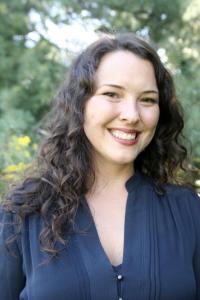 Marta Willgoose ’01: Gallons of Honey
Marta Willgoose ’01: Gallons of Honey
At this year’s convocation, Marta Willgoose shared some of her insights as a Marlboro graduate and rising star in the field of communications, including this excerpt. Marta is currently the vice president of communications for United Cerebral Palsy of New York City.
December of my senior year, I had permission to set up a temporary installation in the Drury Gallery. I wanted to test an idea I had for the core sculptural element for my exhibit. I knew it was going to take a lot of help to create the “beast” I had in mind for my senior show.
I faced two major challenges: First, the materials were going to be costly. I’d need two-by-fours, plywood, rope, tubing, hardware and the ubiquitous gallons of honey central to my piece. Secondly, I would need help with construction, sound, electrical wiring and putting the whole thing together, if I was going to have a prayer of graduating on time.
Fortunately, a town meeting sub committee helped me fund the materials for the project. In addition to having the incredible guidance and support of my Plan sponsors, a number of my peers, particularly a filmmaker and a cellist, came to my aid. Together we raised the figurative “barn”: my senior show.
By calling on my community and asking for help, I learned to be a student of life. Every situation offers a lesson. When you may not know how to do something, or what approach to take, look to your community. Even if there is no straightforward lesson plan, you will always find a teacher. You will always find a fresh perspective.
’02
MEGAN HAMILTON spent last year in Daejeon, South Korea, teaching English to fifth graders.
’03
EMILY HOOD and Timothy Ferrin were married on October 13 in Lake Forest, Illinois. Emily received a doctoral degree in biochemistry from Dartmouth last spring, and is a freelance writer and editor for online education providers in Chicago.
’05
This fall, NOAH LEVINSON celebrated 10 years of Calcutta Kids, the nonprofit organization he founded, which works to reduce malnutrition and infant and maternal mortality rates in the slums of India. Noah and his wife, Evangeline, visited Vermont in September and held an anniversary celebration and benefit for the organization in Brattleboro, and a wedding for themselves in Marlboro.
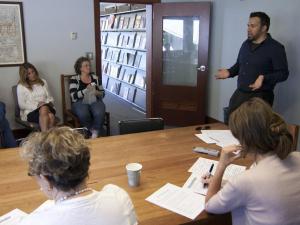 Mark Gerlach ’06: Starting Fires with Alumni
Mark Gerlach ’06: Starting Fires with Alumni
“It felt good to be able to give something back to Marlboro,” said Mark Gerlach, a career consultant and job search strategist who served as presenter and resource for an alumni “firestarter” retreat last September. The retreat, organized by Desha Peacock, director of career development, and former alumni director Katie Schendel, gave recent alumni the time, space and inspiration to move toward a satisfying career.
“The joke my friends sometimes make is that I couldn’t find a job, so I got hired telling other people how to find a job,” said Mark, who moved to Portland, Oregon, after graduating, just as the economy was heading south. He ended up working for a staffing service, then as an employment liaison for a local community college. “Oregon had the third highest unemployment rate in the country, so I learned a ton about what jobseekers face in a bad economy.”
When Mark returned back east in 2011, he started helping friends and family and doing a few speaking engagements, aand it snowballed into a consulting business. He’s also working on a book, tentatively titled The 13 Things You Should Do Before Graduating College That Will Help You Get a Job.
“Marlboro helped me figure out how something seemingly unrelated can be a window into understanding an important concept,” said Mark, who did his Plan of Concentration in political theory and economics. “What I didn’t have when I left college was a sense of how business worked, or how professional people made decisions. However, Marlboro did give me a skill set for learning the things I was missing.”
’08
In January, KELLY BAUR will be studying economics and preparing a documentary film at the Universidad de Concepcion in Chile, with support from a Rotary International’s Ambassadorial Scholarship. Kelly’s documentary will focus on the environmental and social costs of the Chilean paper pulp industry.
’10
“I’ve wanted to serve in the Peace Corps since I was in the eighth grade,” says CHRIS BOYLE, who is teaching English as a Peace Corps Volunteer in Berd, Armenia. “I like traveling, languages and culture, and as I learned more about those three things at Marlboro, I thought why not live somewhere else for two years? I don’t regret it, and I am happy to follow something I’ve always thought about doing.”
’12
“The best thing about my work, hands-down, is the rowdy kids,” writes EVA BAISAN, who is teaching English in Japan through the JET (Japan Exchange and Teaching) program. When not teaching, Eva spends time painting at a nearby temple, chatting up the ladies at the octopus dough ball stand, taking yoga and hula lessons, hiking on ancient pilgrimage trails or searching for fake mustaches at the 100¥ store.
Marlboro sadly bid farewell to Katie Schendel, alumni director, who resigned at the end of September to spend more time with her family and do consulting work. A search for a new alumni director is in progress.
Marlboro Memory Project
For last spring’s Alumni Reunion, we asked Marlboro’s 2,447 graduates to answer a few questions. Here are some responses to two of the questions:
If you were to create a Marlboro bumper sticker, what would it say?
• I miss Jon Maslow.
• Follow this vehicle to a high place of deep thought and dark nights.
• Always looking forward.
• 2,447 served worldwide.
• I survived mud season.
• Liberal artists at play.
• Fighting Dead Trees take state!
• Got a Plan?
• We have a cookie drawer.
• Marlboro College: 260 students, 1 printer.
Any words of advice to current students?
• Think for yourselves.
• Explore—let your curiosity guide you.
• Keep your hands on the plow.
• See the world. Learn a language well.
• Go for it—learn to learn, love and live.
• Pursue your interests now and do not worry about whether you want to be pursuing those interests for the rest of your life.
• Don’t listen to the advice of alumni. The mistakes you make should be your own.
• Understand how lucky you are and make the most of it.
• Graduate and do good deeds. n Memorize the smell of a Marlboro autumn morning.
• It’s OK to be fashionable. Just make sure you oil and wax your leather shoes.
• Have fun—it goes faster than you think!
Letters
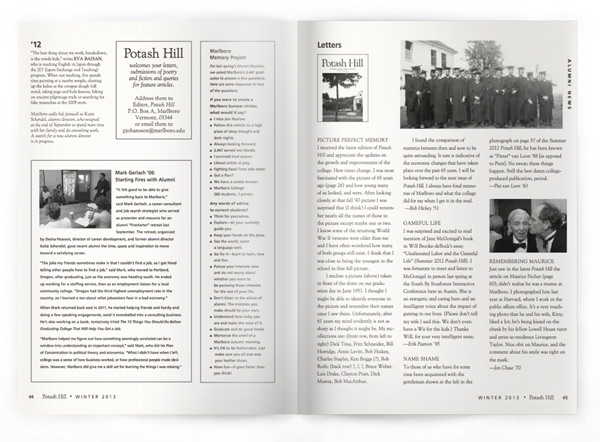
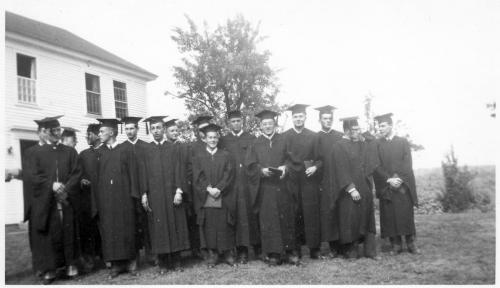 Picture Perfect Memory
Picture Perfect Memory
I received the latest edition of Potash Hill and appreciate the updates on the growth and improvements of the college. How times change. I was most fascinated with the picture of 65 years ago (page 26) and how young many of us looked, and were. After looking closely at that fall ’47 picture I was surprised that (I think) I could remember nearly all the names of those in the picture except maybe one or two. I know some of the returning World War II veterans were older than me and I have often wondered how many of both groups still exist. I think that I was close to being the youngest in the school in that fall picture.
I enclose a picture (above) taken in front of the dorm on our graduation day in June 1951. I thought I might be able to identify everyone in the picture and remember their names once I saw them. Unfortunately, after 61 years my mind evidently is not as sharp as I thought it might be. My recollections are: (front row, from left to right) Dick Titus, Fritz Schneider, Bill Horridge, Arnie Levitt, Bob Hickey, Charles Staples, Ken Briggs (?), Bob Roth; (back row) ?, ?, ?, Bruce Weber, Luis Drake, Clayton Pratt, Dick Murray, Bob MacArthur.
I found the comparison of statistics between then and now to be quite astounding. It sure is indicative of the economic changes that have taken place over the past 65 years. I will be looking forward to the next issue of Potash Hill. I always have fond memories of Marlboro and what the college did for me when I get it in the mail.
—Bob Hickey ’51
Gameful Life
I was surprised and excited to read mention of Jane McGonigal’s book in Will Brooke-deBock’s essay “Unalienated Labor and the Gameful Life” (Summer 2012 Potash Hill). I was fortunate to meet and listen to McGonigal in person last spring at the South By Southwest Interactive Conference here in Austin. She is an energetic and caring hero and an intelligent voice about the impact of gaming in our lives. (Please don’t tell my wife I said this. We don’t even have a Wii for the kids.) Thanks Will, for your very intelligent essay.
—Erik Pearson ’95
Name Shame
To those of us who have for some time been acquainted with the gentleman shown at the left in the photograph on page 57 of the Summer 2012 Potash Hill, he has been known as “Pieter” van Loon ’88 [as opposed to Pietr]. No sweat; these things happen. Still the best damn college-produced publication, period.
—Piet van Loon ’63
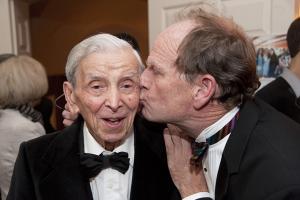 Remembering Maurice
Remembering Maurice
Just saw in the latest Potash Hill the article on Maurice Pechet (page 60); didn’t realize he was a trustee at Marlboro. I photographed him last year at Harvard, where I work in the public affairs office. It’s a very touching photo that he and his wife, Kitty, liked a lot; he’s being kissed on the cheek by his fellow Lowell House tutor and artist-in-residence Livingston Taylor. Nice obit on Maurice, and the comment about his smile was right on the mark.
—Jon Chase ’70
In Memoriam
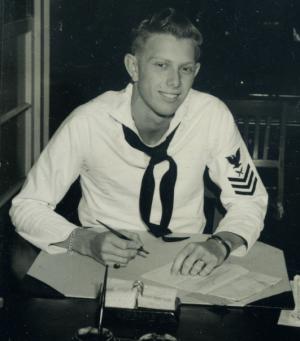 James “Butter” Shingle ’50
James “Butter” Shingle ’50
A Marlboro pioneer, James Shingle (right) passed away in August at the age of 87. Born in Hawai’i, he attended Punahou School in Honolulu. During World War II, Jim was in the Navy, stationed at Pearl Harbor. He graduated from Marlboro College with a degree in literature, then worked at Bishop Insurance before starting his own business, Property Investment Company, with his brother and a friend.
“Butter was a very generous and fond friend of Marlboro,” noted Lisa Christensen, chief advancement officer. “He was a delight to visit (not just because he lived in Hawai’i) because he was interested in many things and was a gracious host. We had many good conversations about the importance of young people getting an opportunity to travel and live in other cultures, as well as models of education like Marlboro that allow students to pursue their own thoughts and interests in literature.”
Jim enjoyed being with his family and friends, who knew him for his great sense of humor and humility. He was an avid tennis player and skier, and he loved to travel. He was a lifelong philanthropist and longtime president of the James & Abigail Campbell Family Foundation. As president of the Kapi’olani Hospital board of directors, Jim worked tirelessly to expand and upgrade the hospital. He is survived by longtime companion Howard Francis Gardiner, as well as his daughter Alice Ka’eu’eu Shingle, two grandsons and numerous cousins, nieces and nephews.
Peter Gore ’50
Another pioneer alumnus and husband of longtime staff member Sally Gore, Peter Gore died in August in his Wilmington, Vermont, home. He was 85. Peter was born in Amherst, Massachusetts, and went to high school at Deerfield Academy. He served as a member of the U.S. Navy in World War II before attending Marlboro. Peter received his master’s degree in romance language education from the University of Massachusetts and further studied at Laval University, Canada, and Grenoble University in France.
Peter taught French and coached athletics at Deerfield Academy for 23 years, and then at Wilmington High School. He later served as rural mail carrier and clerk at the Wilmington post office, retiring from there in 1993. Peter also established and operated the Wilmington Antique & Flea Market over the past 30 years. He enjoyed traveling and the outdoors, listening to all types of music and collecting coins and stamps. Peter is survived by his wife of 53 years, Sally, three children and several grandchildren.
Gay Gorton Fullick
In January 2012, Gay Gorton Fullick passed away at the Springdene Nursing Home, in London. She was 83. Gay was the daughter of Audrey Gorton ’55, alumna and member of the faculty for 33 years, and sister of Bridget Gorton ’59. She was an active help to the college in many ways, particularly during theater professor Paul Nelsen's early group visits to London. She is survived by her husband, Roy, her children, Assheton, Michael and Victoria, and her sister, Bridget.
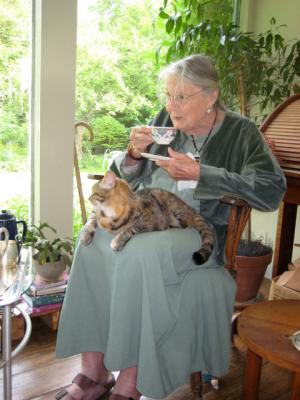 Suvia Whittemore Judd
Suvia Whittemore Judd
In September, Sue Judd (right), a dear friend of the college and wife of long-term American Studies faculty member Dick Judd, died at her home in Marlboro in September. Sue graduated from Williams College with Dick in 1945, one of the first women to attend what was then an all-male institution. In 1950, she and Dick moved to Vermont so he could start his long teaching career at Marlboro College.
“Sue was a presence on campus, as well as an accomplished host for events at their house nearby,” said Ellen McCulloch-Lovell, Marlboro president. “For many years, the Wendell-Judd cross-country ski race ended there for a party.” Dick, who died five years ago, taught at the college until his retirement in 1989.
Sue also taught French and art at the Marlboro Elementary School and was very involved in the school’s Parents and Friends group. She sang for many years in the Community Chorus and took piano lessons with Blanche Moyse. She took classes at Marlboro College, and in the 1970s studied pottery with Malcolm Wright and became a serious potter. Sue was an avid organic gardener, and employed many college students to work with her in the garden and around the house. Toward the end of her life, she received visits from some of Dick’s former students. Sue leaves a sister, Elizabeth MacArthur of Marlboro, two daughters, Kate Judd ’82 and Suria Thayer Judd, and several nieces, nephews and great-nieces and nephews.
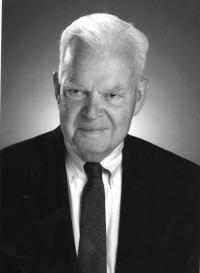 Robert T. Gannett
Robert T. Gannett
A longtime friend and supporter of Marlboro College, Robert Gannett died at his home in August. Robert served four terms representing Brattleboro in the Vermont House of Representatives and ten terms representing Windham County in the Vermont Senate. He was born in Boston, Massachusetts, and graduated from Harvard College. In 1942, he received his law degree and enlisted in the United States Army. Bob came to Brattleboro in 1946 to practice law, and conducted an active tax and estate practice until he retired from the Vermont bar in 2012, after having been a member for 64 years.
Bob believed in community and was also actively involved with many organizations in the area, including Brattleboro Memorial Hospital, the Prouty Center, the Vermont Community Foundation, Youth Services, the Green Mountain Club, the Brattleboro Retreat and the Brattleboro Rotary Club, of which he was a founding member. He received an honorary degree from Marlboro College in 2001, for his many years of support and advice, reportedly including steering Tom Ragle to the presidency in 1958. He is survived by his three children, a brother and sister and several grandchildren.
Parting Shot
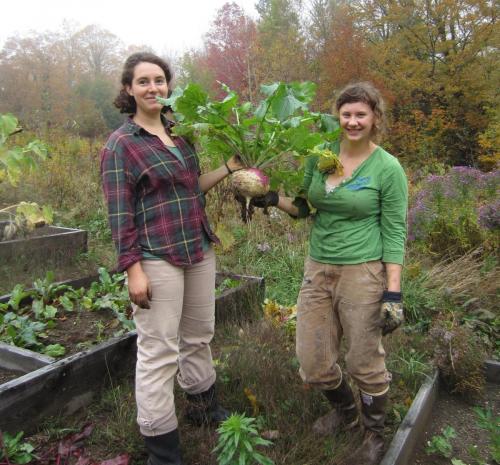 Sophomores Mia Bertelli and Maya Rohr hoist the mother of all turnips from the Marlboro farm at Work Day this fall. For more about progress at the farm last summer, go to Marlboro's YouTube page. Photo by Dianna Noyes
Sophomores Mia Bertelli and Maya Rohr hoist the mother of all turnips from the Marlboro farm at Work Day this fall. For more about progress at the farm last summer, go to Marlboro's YouTube page. Photo by Dianna Noyes